雅虎贊助網站載入中...
世界著名天文鐘圖賞
# 1
世界著名天文鐘系列
中世紀時代,天文科學發展迅速,很多著名的城市都會建造一個巨大的天文鐘,以彰顯其科技、文化、建築、藝術等領先實力!名城名鐘就是今次的主題!
精心製作的名鐘,不僅讓我們看到時間,還可觀察各種各樣的的天文學信息,當中包括有日期(Date)和月份(Month);太陽(Sun)、月亮(Moon)和黃道帶星象(Zodiac)的位置;月相盈虧(Moon phases);真太陽時運行規律(Equation of time);恆星時間(Sidereal time)等。
顯示形態包括各種各樣的指標(Hand)和鐘盤組合(Dials),以地球為中心的模型配合美麗的宇宙星象圖形,當中加入一些聖經玫故事人物雕像,響鈴、打鳴等機械結集,更座落巨大藝術城堡建築群,是一等一的《世界文明遺產》藝術作品!
(All Pictures Borrowed)
The Old Town Hall of Prague

In Strasbourg Cathedral
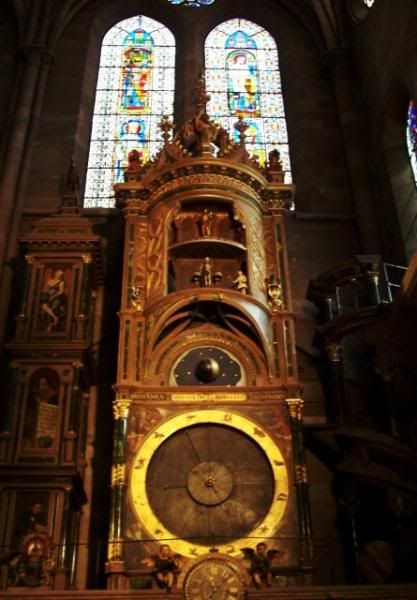
In Wells Cathedral
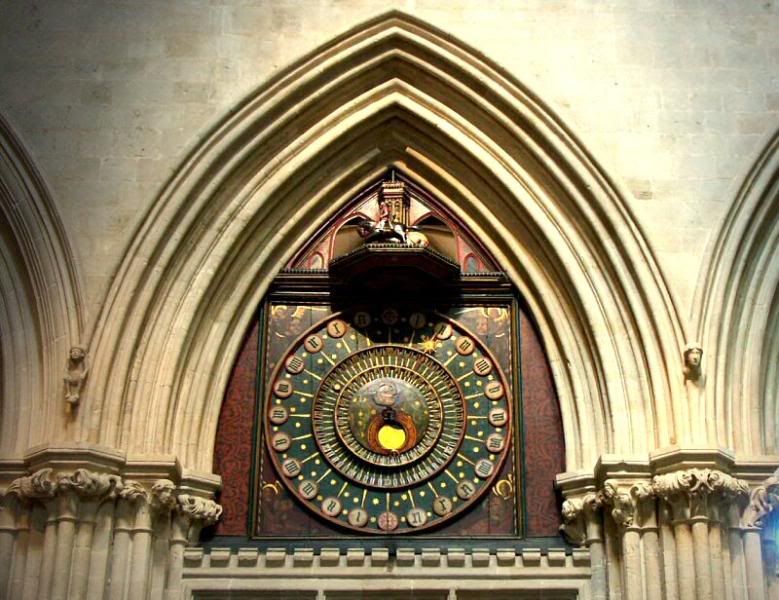
In Old Bern
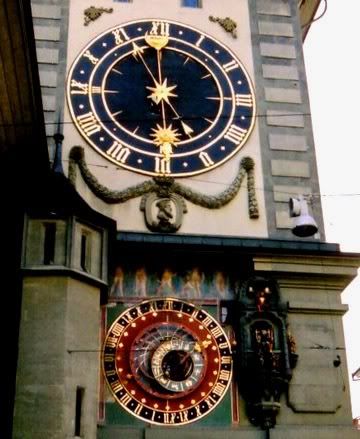
In St. Mary's Church in Gdansk

In Lund Cathedral

In Rouen
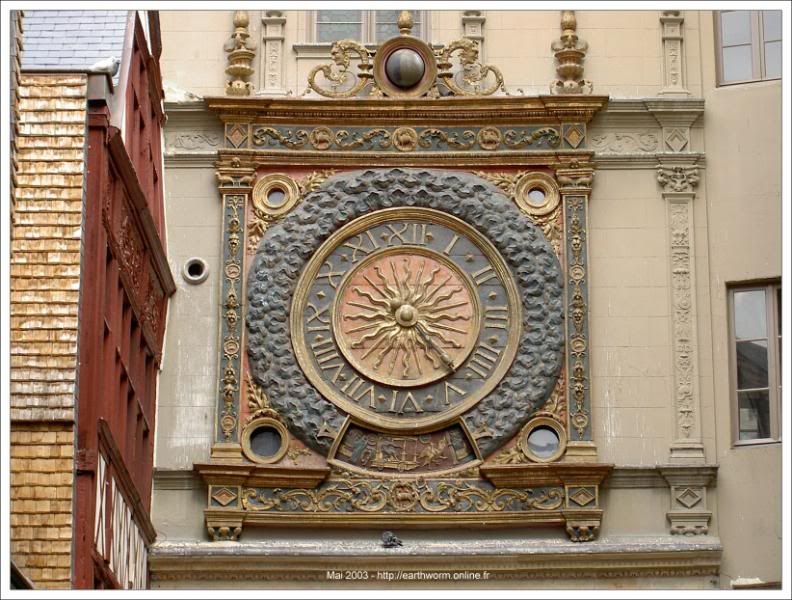
On Nuremberg Frauenkirche
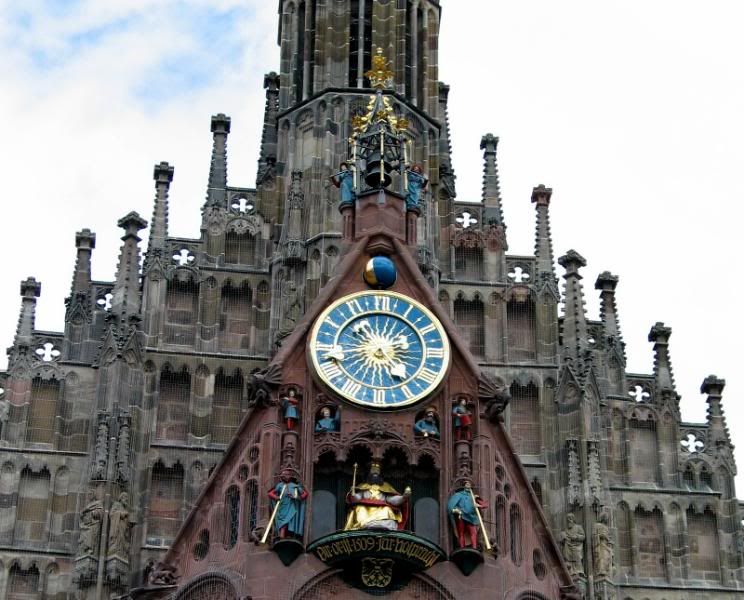
In Lyon Cathedral
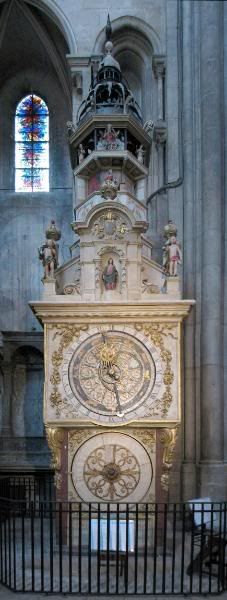
In Olomouc
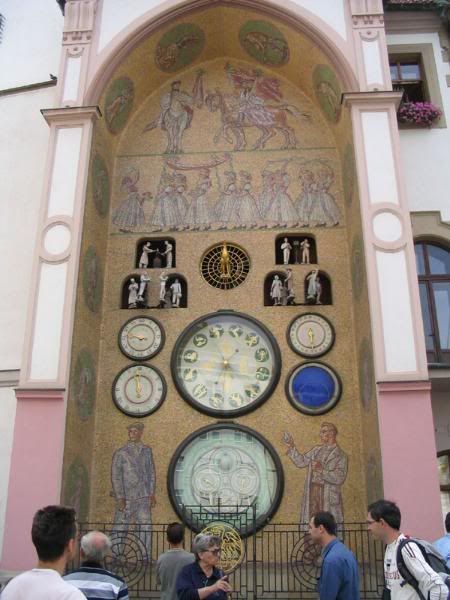
On the Jagiellonian University in Kracow. One of the figures in the hourly procession is St. John Cantius.
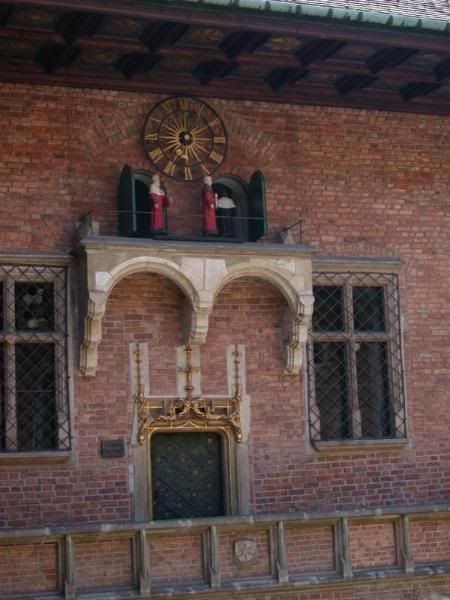
I found images of two astronomical clocks that no longer exist.
The first is that built by the Medieval English mathematician Richard of Wallingford, Abbot of St. Albans in Hertfordshire. It is visible in this manuscript illumination.

The second is that on the Schauhaus in Nuremberg, built in 1522 and destroyed in 1811. Figures of the Holy Roman Emperor and his seven Electors flank the clock, with half-figures representing the six known planets. An illustration was included in Karl Heildeloff's Medieval Ornament.
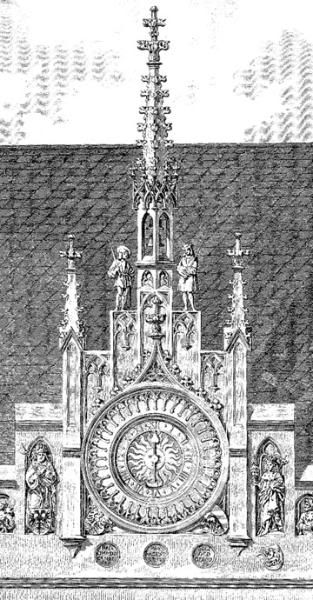
Exeter Cathedral
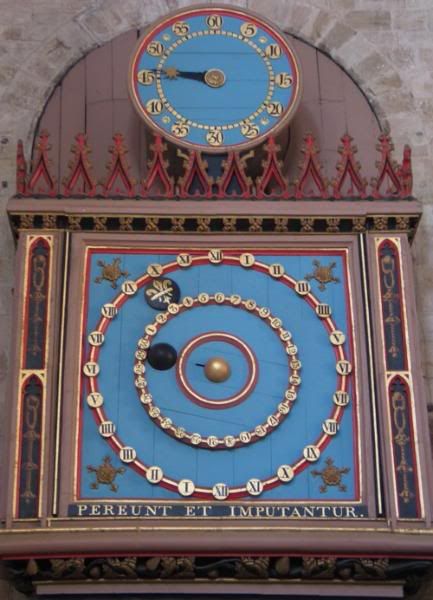
Rothenberg Town Hall
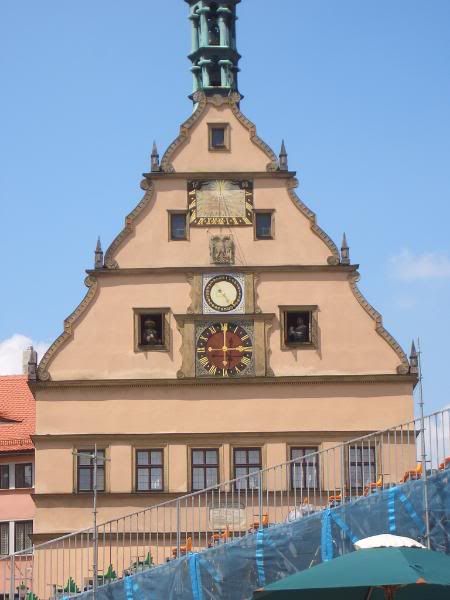
Ottery St. Mary
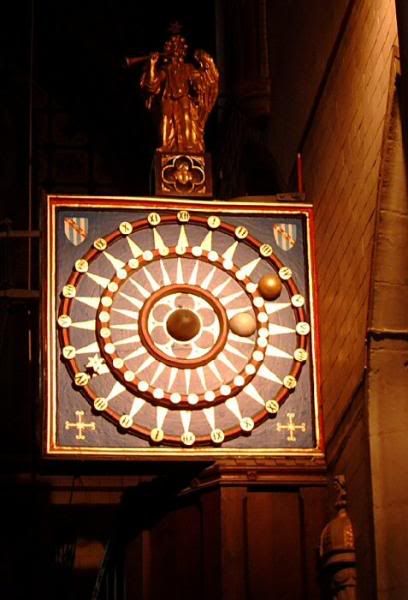
Besancon Cathedral
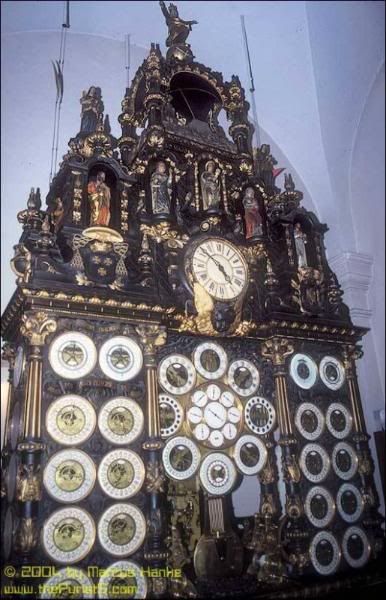
St. Mark's Square, Venice
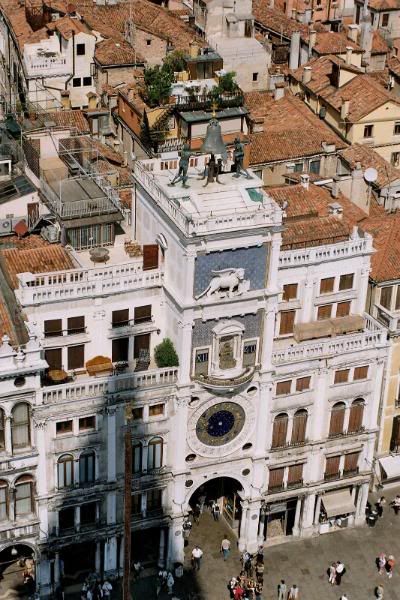
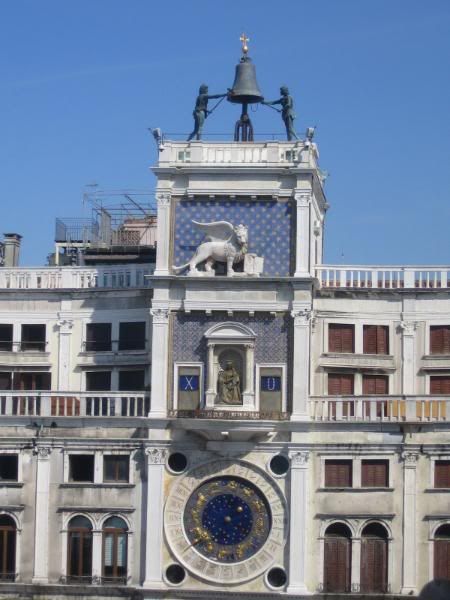
Messina. This is on a tower that has automata and belljacks and other fun things.
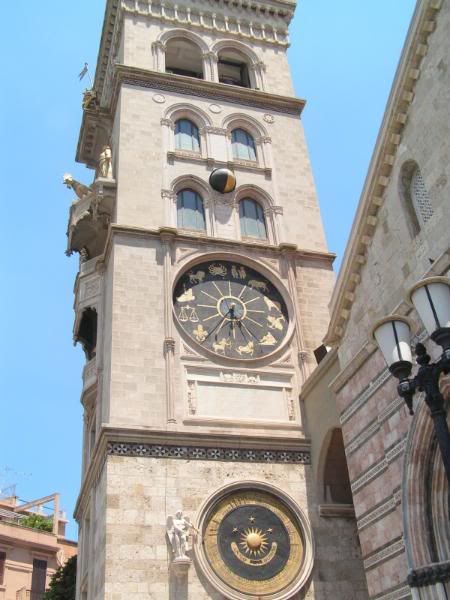
Graz clock tower
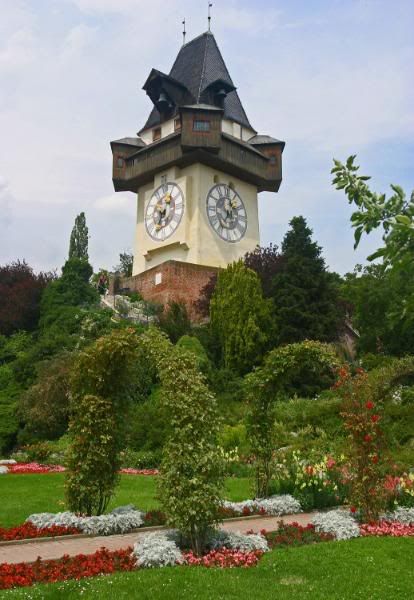
Art Nouveau clock in Vienna
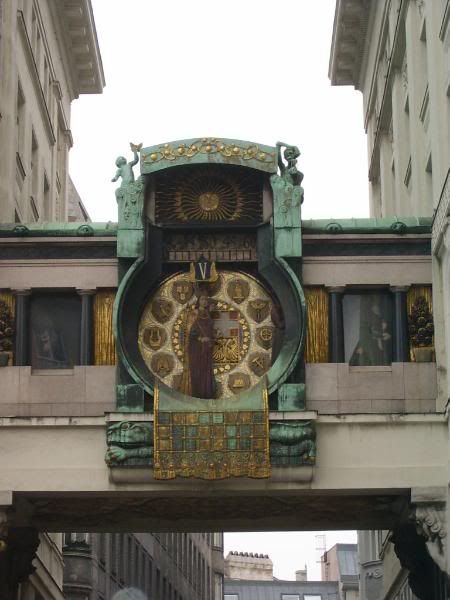
In Brescia
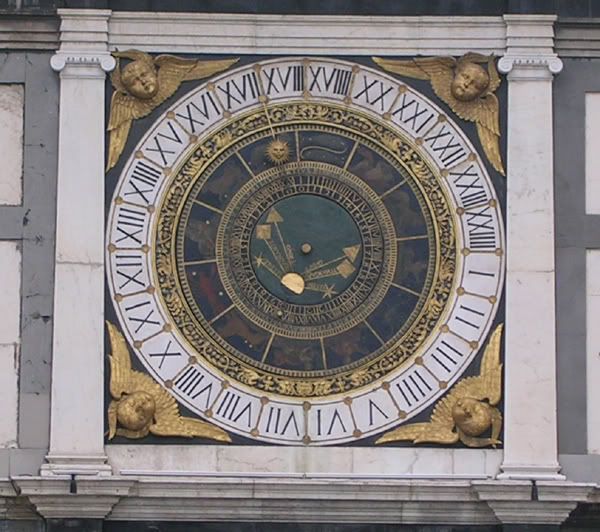
中世紀時代,天文科學發展迅速,很多著名的城市都會建造一個巨大的天文鐘,以彰顯其科技、文化、建築、藝術等領先實力!名城名鐘就是今次的主題!
精心製作的名鐘,不僅讓我們看到時間,還可觀察各種各樣的的天文學信息,當中包括有日期(Date)和月份(Month);太陽(Sun)、月亮(Moon)和黃道帶星象(Zodiac)的位置;月相盈虧(Moon phases);真太陽時運行規律(Equation of time);恆星時間(Sidereal time)等。
顯示形態包括各種各樣的指標(Hand)和鐘盤組合(Dials),以地球為中心的模型配合美麗的宇宙星象圖形,當中加入一些聖經玫故事人物雕像,響鈴、打鳴等機械結集,更座落巨大藝術城堡建築群,是一等一的《世界文明遺產》藝術作品!
(All Pictures Borrowed)
The Old Town Hall of Prague

In Strasbourg Cathedral

In Wells Cathedral

In Old Bern

In St. Mary's Church in Gdansk

In Lund Cathedral

In Rouen

On Nuremberg Frauenkirche

In Lyon Cathedral

In Olomouc

On the Jagiellonian University in Kracow. One of the figures in the hourly procession is St. John Cantius.

I found images of two astronomical clocks that no longer exist.
The first is that built by the Medieval English mathematician Richard of Wallingford, Abbot of St. Albans in Hertfordshire. It is visible in this manuscript illumination.

The second is that on the Schauhaus in Nuremberg, built in 1522 and destroyed in 1811. Figures of the Holy Roman Emperor and his seven Electors flank the clock, with half-figures representing the six known planets. An illustration was included in Karl Heildeloff's Medieval Ornament.

Exeter Cathedral

Rothenberg Town Hall

Ottery St. Mary

Besancon Cathedral

St. Mark's Square, Venice


Messina. This is on a tower that has automata and belljacks and other fun things.

Graz clock tower

Art Nouveau clock in Vienna

In Brescia

# 2
The town clock of Rothenberg
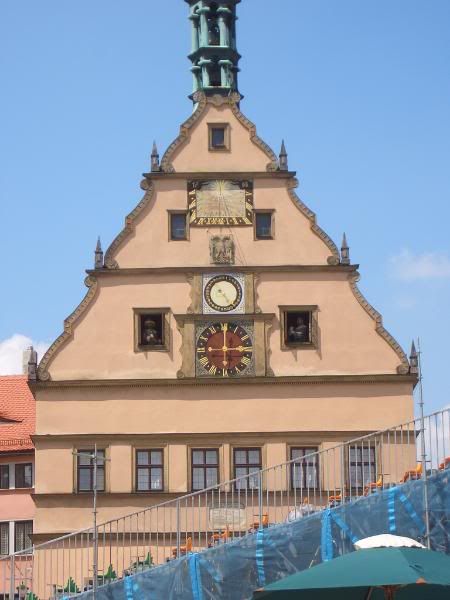
Ulm town hall
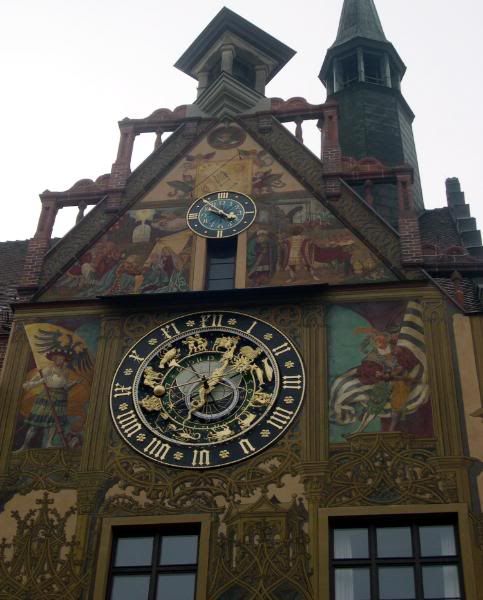
Basel town hall
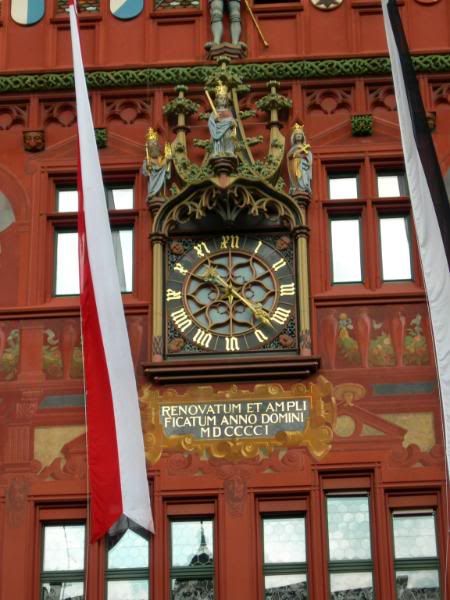
Heilbronn town hall
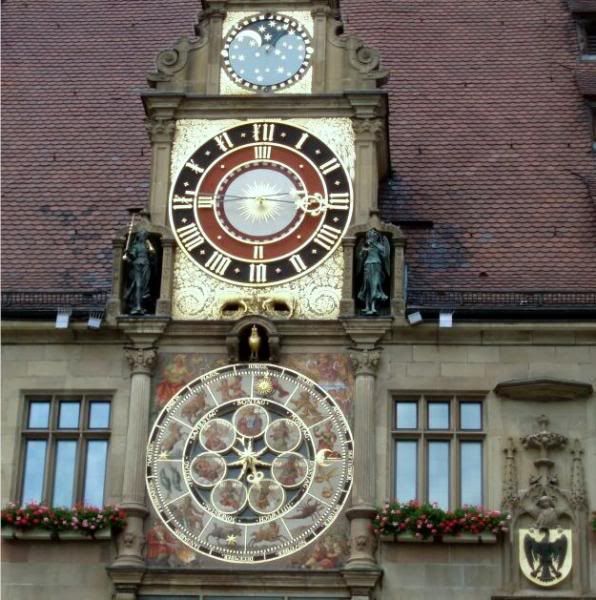
Münster Cathedral
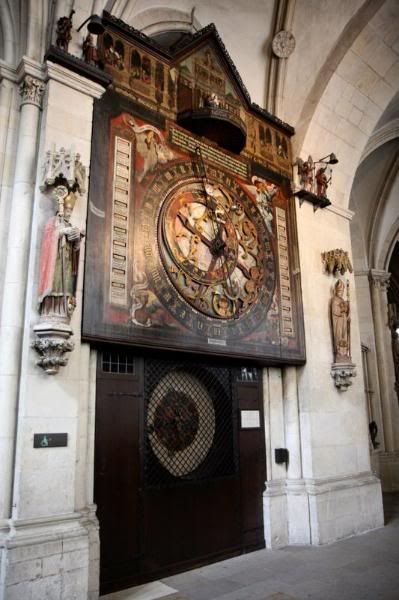
In Sighişoara, not far from the residence of Vlad Tepes. The processional figures represent the days of the week.

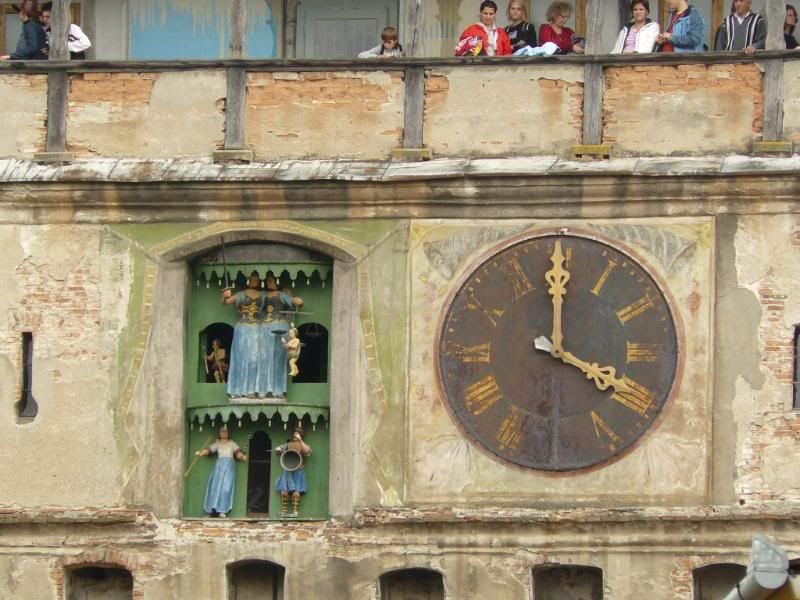
In Solothurn
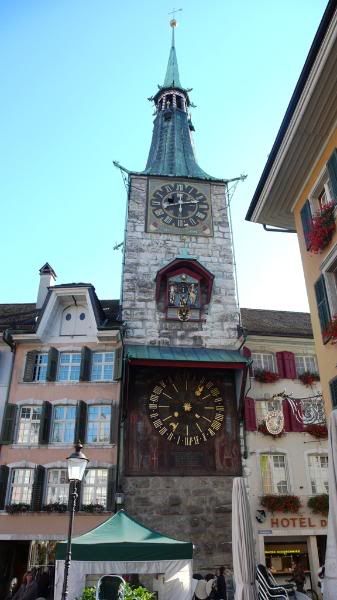

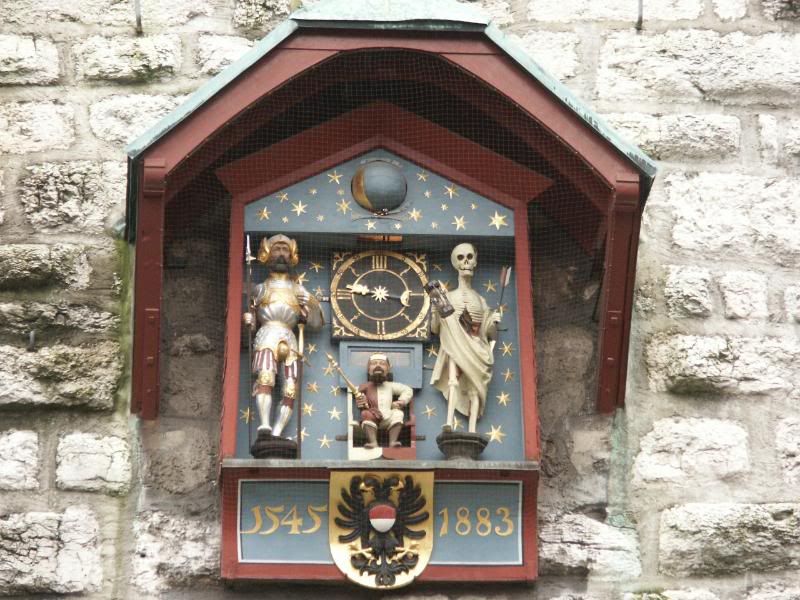
Old town hall in Munich
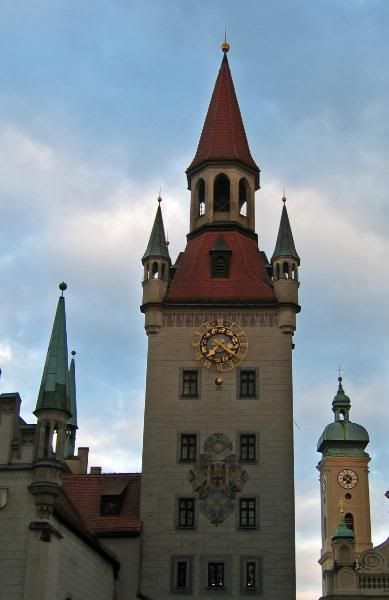

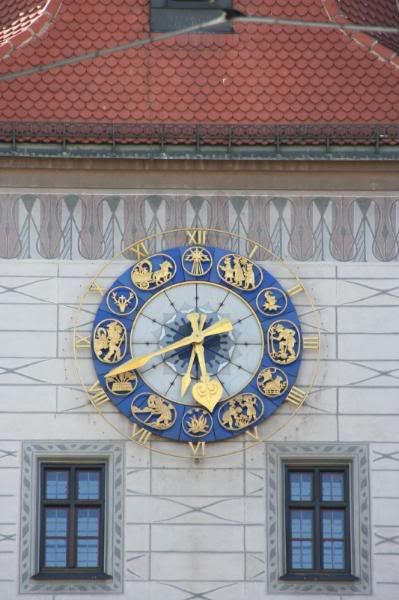

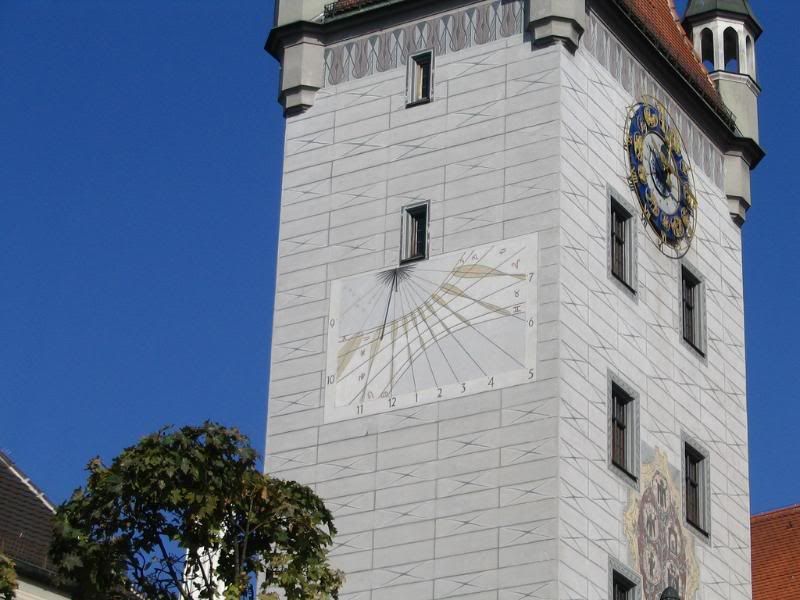
In Lier. This is called the Zimmer Tower, after a famous local astronomer and clockmaker of the early 20th century
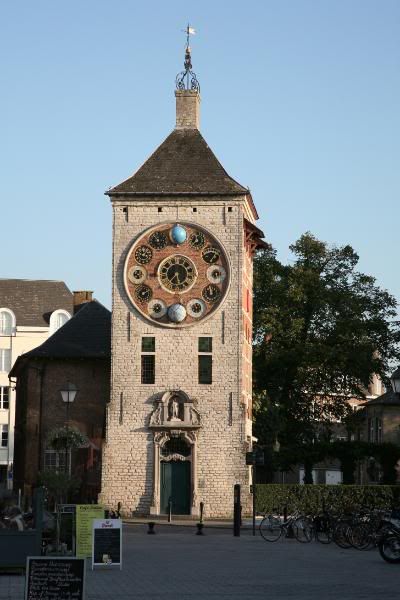
On the tower of Cardiff Castle.
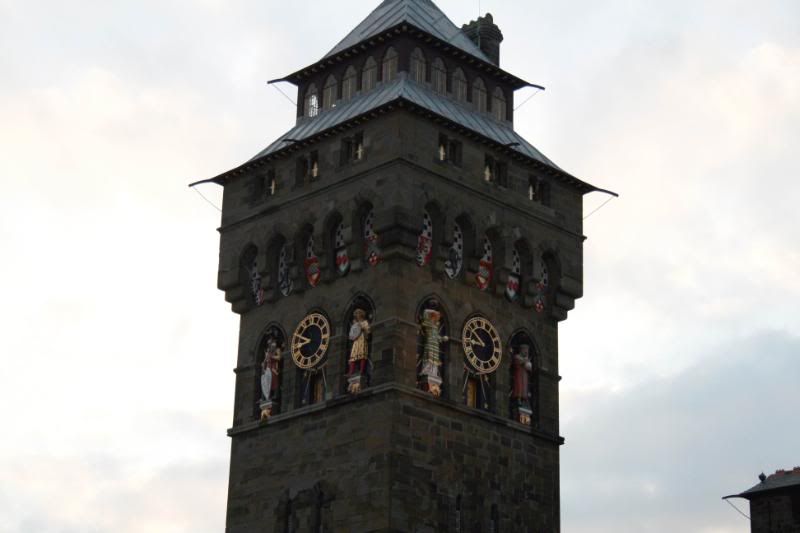
On Görlitz town hall
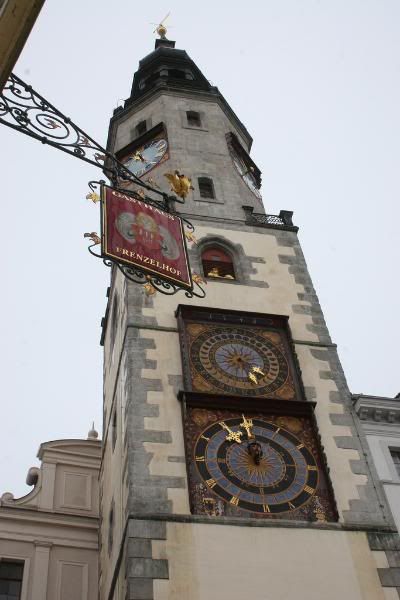

In Rostock Cathedral.
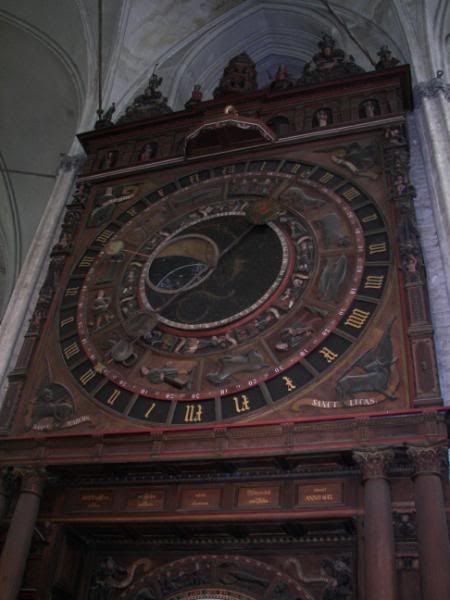
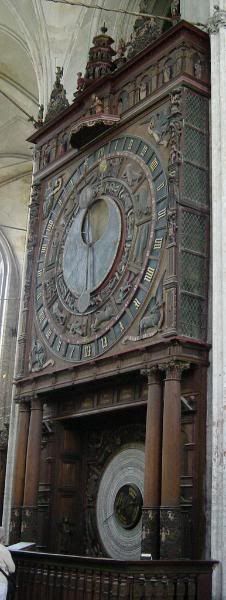

Ulm town hall

Basel town hall

Heilbronn town hall

Münster Cathedral

In Sighişoara, not far from the residence of Vlad Tepes. The processional figures represent the days of the week.


In Solothurn



Old town hall in Munich





In Lier. This is called the Zimmer Tower, after a famous local astronomer and clockmaker of the early 20th century

On the tower of Cardiff Castle.

On Görlitz town hall


In Rostock Cathedral.


# 3
In Beauvais Cathedral
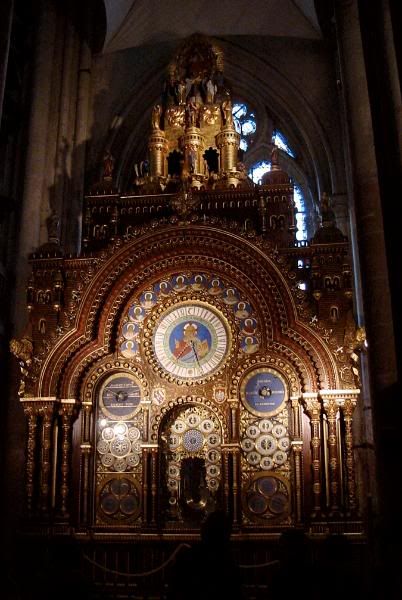
In Chartres Cathedral
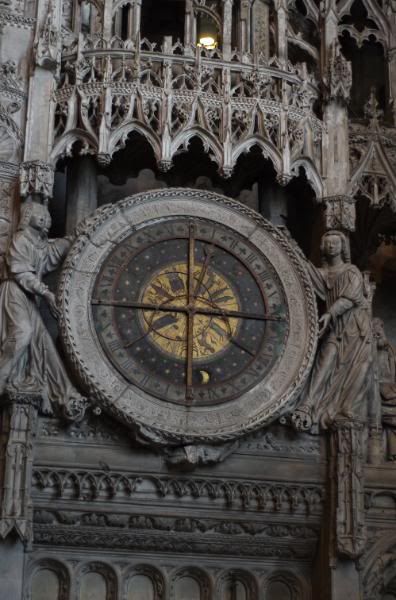
In Florence Cathedral
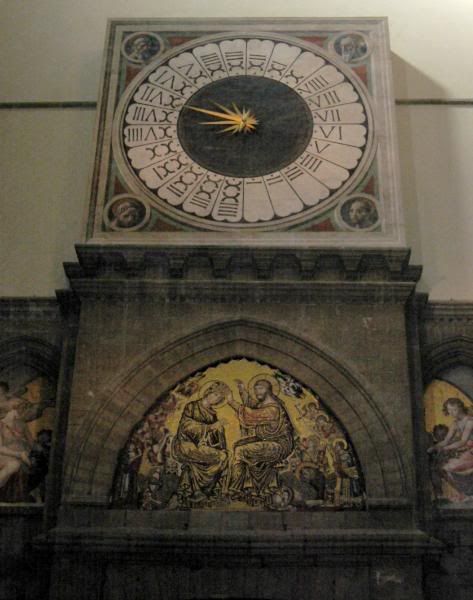
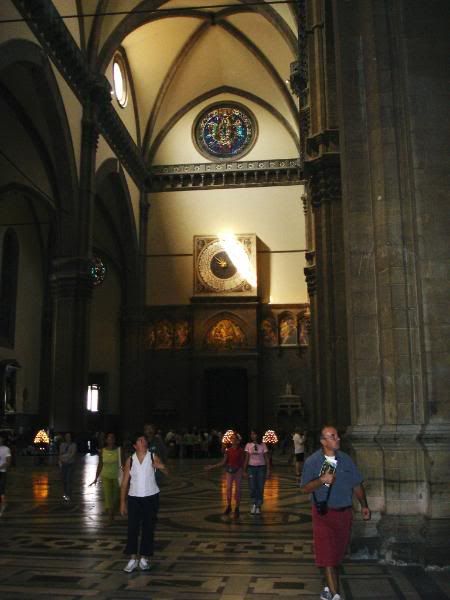
In Lübeck Cathedral, behind a magnificent rood beam carved by Bernt Notke
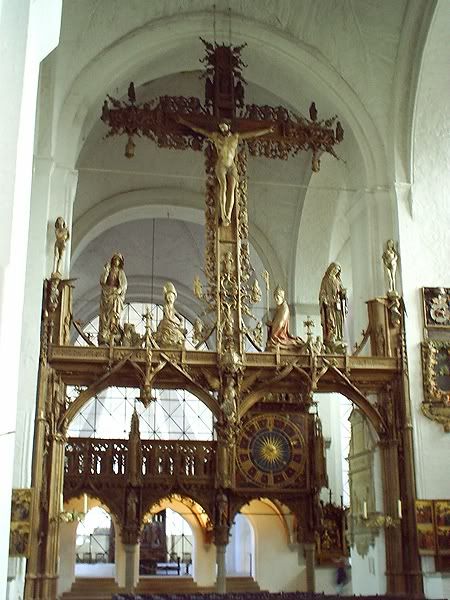
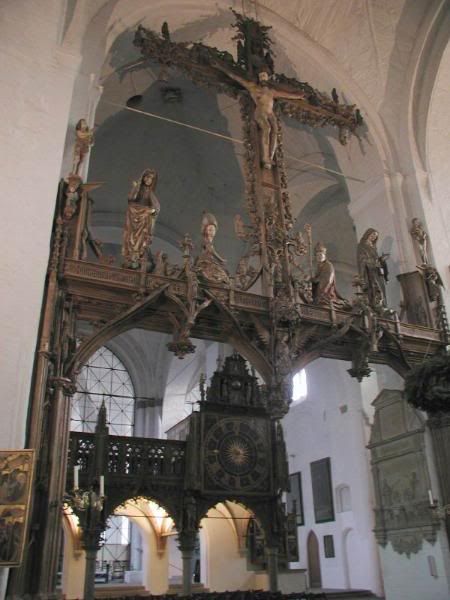
In the Church of St. Mary in Lübeck. The clock pictured is a reconstruction. The original, along with most of the treasures of the church, was destroyed in the Allied bombing raids on Palm Sunday of 1942.
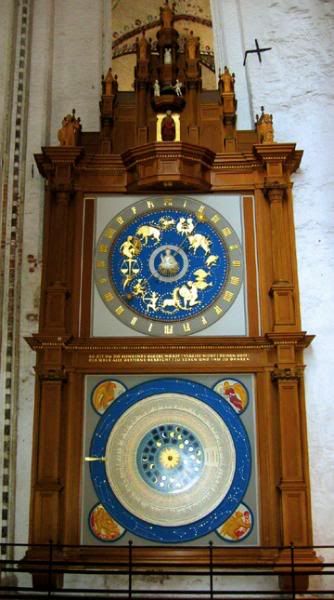

From the other side of things, this clock in York Minster is dedicated to the Royal Air Force.
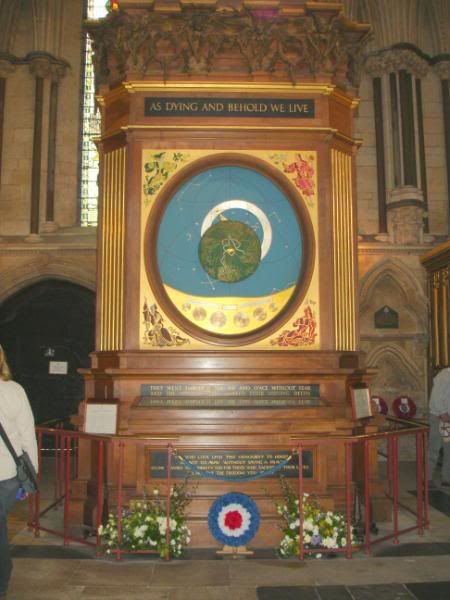
The Astrarium of Giovanni de Dondi
Although this clock, which was made between 1348-62 has been lost to man for many centuries, details of it were recorded in the old Latin text of Giovanni de Dondi's MS which was unearthed nearly 200 years ago but has only received detailed analysis since the last war. It is from this that all the details of de Dondi's remarkable clock were obtained and from which the copies, such as that seen here in The Time Museum, Rockford, USA were made.
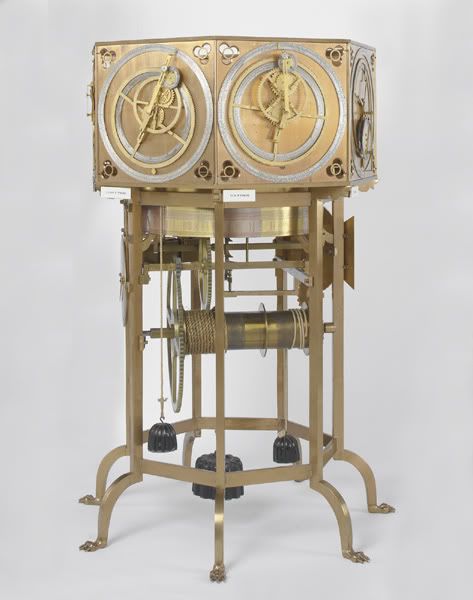
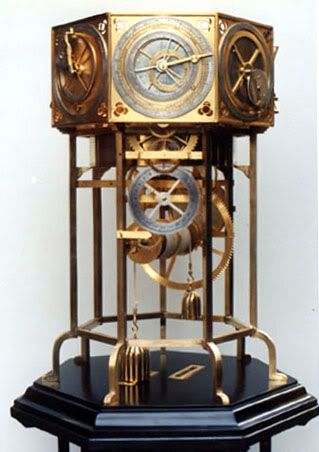
A Musical Astrolabe Clock with Jacks & Automata. Circa 1606.
This clock, probably made for ecclesiastical use in Germany or Eastern France, has a bronze and iron movement with five trains for going, hours, quarters, music, and repeat. The figure in the bottom panel represents Urania. The lower level of figures above the dial form an ecclesiastical procession whilst above may be seen the three Jacks which strike the hours and quarters.
The astrolabe dial has a silvered horizon plate for 45 1/2 degrees and the rete carries the signs of the zodiac. Around it is an hour ring and outside this a movable calendar giving the Saints' Days. The Hour hand carries the sun.
There are subsidiary dials for the day, minutes, and quarter hours, ecclesiastical calendar, age and phases of the moon and minutes; the two latter being later additions. Strike/silent is also provided. Height: 97".
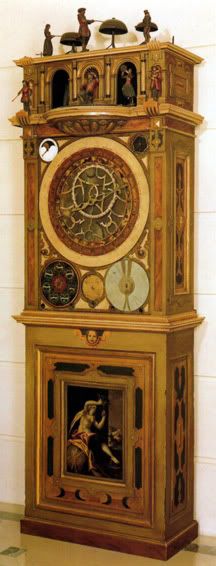
A Remarkable Astronomical Clock by Aurelius at San Daniele, Vienna. Circa 1770.
This clock, which is too complex to describe here, was made by Aurelius, a monk at the Royal Court monastery in Vienna and was described by him in Gründliche Erklärungeines astronomisch und systematischen Uhrwerk Welches P. 1770.
The ornate case some 2.34 m high, is surmounted by a figure of Victory holding trumpets and with cupids around her and an armillary sphere above. Lower down 12 cupids represent the signs of the Zodiac, together with other decorative features.
The main dial has an outer calendar ring with the Zodiacs giving the positions of the sun, moon, nodes, and lunar apogee and perigee. At the centre is a raised chapter ring with minute and hour hands. Above this are apertures for the dominical letter, golden number, epact, day of the week, day of the month and the year of the leap year cycle.
The celestial globe above shows the times of sunrise and sunset and also enables the equation of time to be calculated, Other indications given by the dials on either side are: sidereal time, mean time, Italian and Babylonian hours, the sun's declination and the lengths of day and night time. Bayerisches Nationalmuseum. Munich.

Large Clock with Carillon and Automata by Isaac Habrecht of Strasbourg. Circa 1590.
The case is of gilded copper and brass, engraved with figures personifying the three theological virtues (Faith, Hope and Charity), the three worldly virtues (Wisdom, Fortitude and Justice) and the three fates of man (on the back). There is a quarter dial and automated figures of silver. It has a three-stage movement of steel with brass wheels; and trains for the going, quarter and full hour striking and for the carillon. The pendulum and cupola are later additions.
From the fact that the Habrecht family were Protestants, and that the music played on the full hour is a version of the Protestant hymn Vater unser, it is assumed that the clock was made for a Protestant court, perhaps that of the Elector Palatinate at Heidelberg. Subsequently, the clock was in the Papal collections in Rome, and then in the collections of the Kings of the Netherlands. It was acquired by Octavius Morgan, Esq., FSA, circa 1855 and bequeathed by him in 1888 to the British Museum.
The design of the clock is based largely on that of the great clock in the cathedral of Strasbourg, made by Isaac Habrecht between 1571-74. This highly complicated clock, the description of which was recorded by Tobias Stimmer, was replaced in 1842, but its former appearance can be seen in his engraving of 1574.
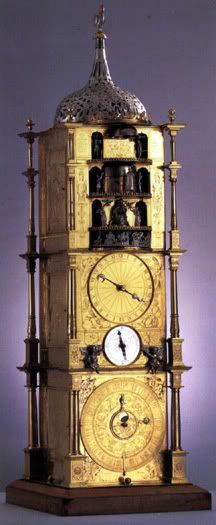
While reading Mystery, Novelty, and Fantasy Clocks by Derek Roberts, I noticed that many of the most impressive clocks featured were in the Time Museum in Rockford, IL. The Rockford Time Museum closed in 1999.
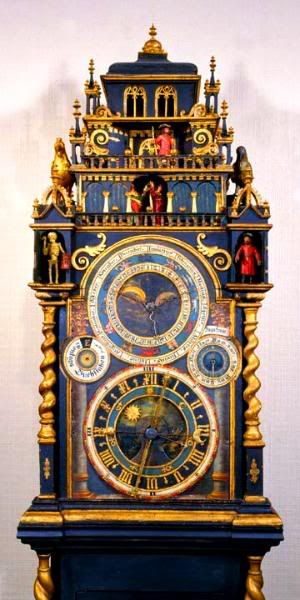
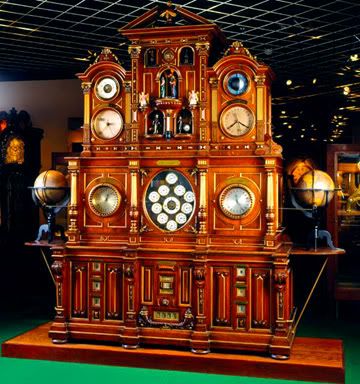
In Brussels


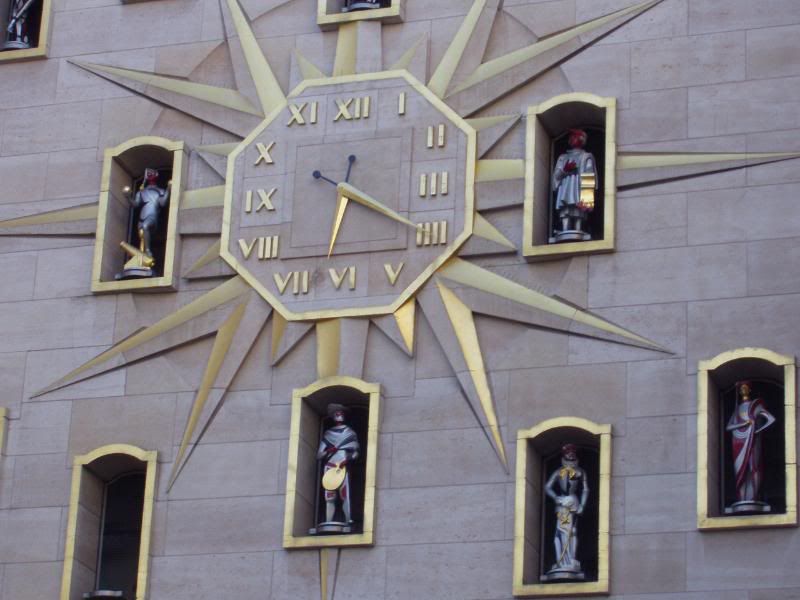

In Chartres Cathedral

In Florence Cathedral


In Lübeck Cathedral, behind a magnificent rood beam carved by Bernt Notke


In the Church of St. Mary in Lübeck. The clock pictured is a reconstruction. The original, along with most of the treasures of the church, was destroyed in the Allied bombing raids on Palm Sunday of 1942.


From the other side of things, this clock in York Minster is dedicated to the Royal Air Force.

The Astrarium of Giovanni de Dondi
Although this clock, which was made between 1348-62 has been lost to man for many centuries, details of it were recorded in the old Latin text of Giovanni de Dondi's MS which was unearthed nearly 200 years ago but has only received detailed analysis since the last war. It is from this that all the details of de Dondi's remarkable clock were obtained and from which the copies, such as that seen here in The Time Museum, Rockford, USA were made.


A Musical Astrolabe Clock with Jacks & Automata. Circa 1606.
This clock, probably made for ecclesiastical use in Germany or Eastern France, has a bronze and iron movement with five trains for going, hours, quarters, music, and repeat. The figure in the bottom panel represents Urania. The lower level of figures above the dial form an ecclesiastical procession whilst above may be seen the three Jacks which strike the hours and quarters.
The astrolabe dial has a silvered horizon plate for 45 1/2 degrees and the rete carries the signs of the zodiac. Around it is an hour ring and outside this a movable calendar giving the Saints' Days. The Hour hand carries the sun.
There are subsidiary dials for the day, minutes, and quarter hours, ecclesiastical calendar, age and phases of the moon and minutes; the two latter being later additions. Strike/silent is also provided. Height: 97".

A Remarkable Astronomical Clock by Aurelius at San Daniele, Vienna. Circa 1770.
This clock, which is too complex to describe here, was made by Aurelius, a monk at the Royal Court monastery in Vienna and was described by him in Gründliche Erklärungeines astronomisch und systematischen Uhrwerk Welches P. 1770.
The ornate case some 2.34 m high, is surmounted by a figure of Victory holding trumpets and with cupids around her and an armillary sphere above. Lower down 12 cupids represent the signs of the Zodiac, together with other decorative features.
The main dial has an outer calendar ring with the Zodiacs giving the positions of the sun, moon, nodes, and lunar apogee and perigee. At the centre is a raised chapter ring with minute and hour hands. Above this are apertures for the dominical letter, golden number, epact, day of the week, day of the month and the year of the leap year cycle.
The celestial globe above shows the times of sunrise and sunset and also enables the equation of time to be calculated, Other indications given by the dials on either side are: sidereal time, mean time, Italian and Babylonian hours, the sun's declination and the lengths of day and night time. Bayerisches Nationalmuseum. Munich.

Large Clock with Carillon and Automata by Isaac Habrecht of Strasbourg. Circa 1590.
The case is of gilded copper and brass, engraved with figures personifying the three theological virtues (Faith, Hope and Charity), the three worldly virtues (Wisdom, Fortitude and Justice) and the three fates of man (on the back). There is a quarter dial and automated figures of silver. It has a three-stage movement of steel with brass wheels; and trains for the going, quarter and full hour striking and for the carillon. The pendulum and cupola are later additions.
From the fact that the Habrecht family were Protestants, and that the music played on the full hour is a version of the Protestant hymn Vater unser, it is assumed that the clock was made for a Protestant court, perhaps that of the Elector Palatinate at Heidelberg. Subsequently, the clock was in the Papal collections in Rome, and then in the collections of the Kings of the Netherlands. It was acquired by Octavius Morgan, Esq., FSA, circa 1855 and bequeathed by him in 1888 to the British Museum.
The design of the clock is based largely on that of the great clock in the cathedral of Strasbourg, made by Isaac Habrecht between 1571-74. This highly complicated clock, the description of which was recorded by Tobias Stimmer, was replaced in 1842, but its former appearance can be seen in his engraving of 1574.

While reading Mystery, Novelty, and Fantasy Clocks by Derek Roberts, I noticed that many of the most impressive clocks featured were in the Time Museum in Rockford, IL. The Rockford Time Museum closed in 1999.


In Brussels



# 4
On the German Museum in Munich

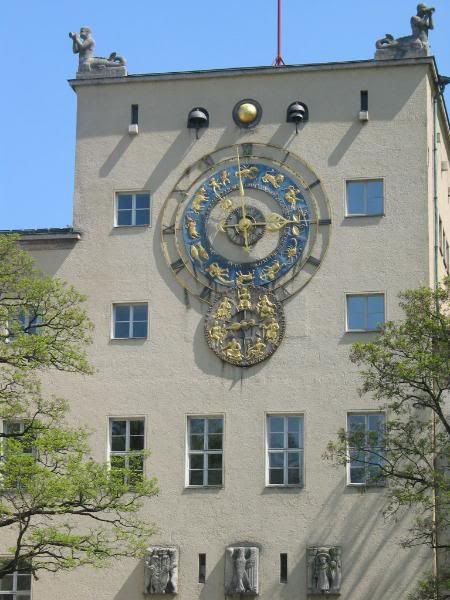
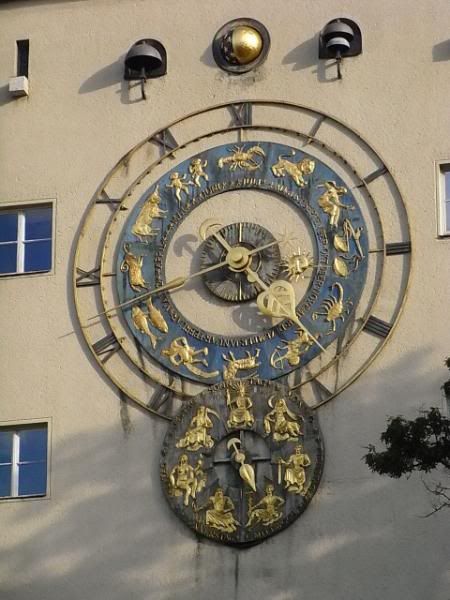
On Eastgate, Chester, commemorating the Victorian diamond jubilee
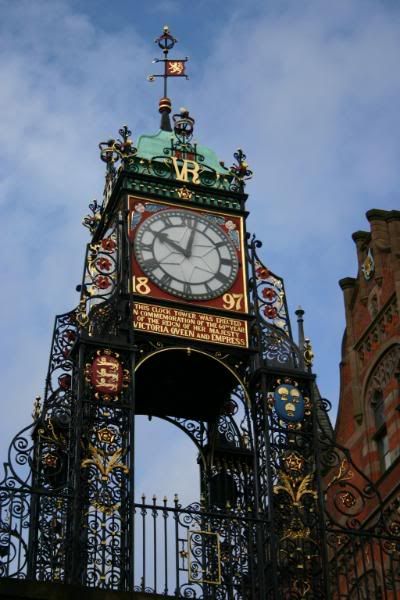

On Esslingen town hall
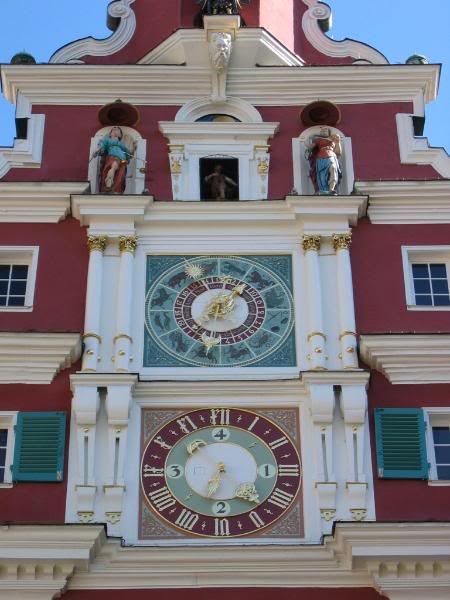
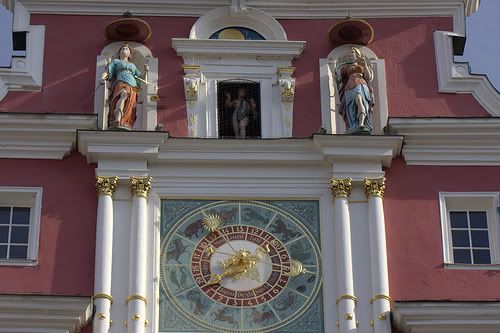
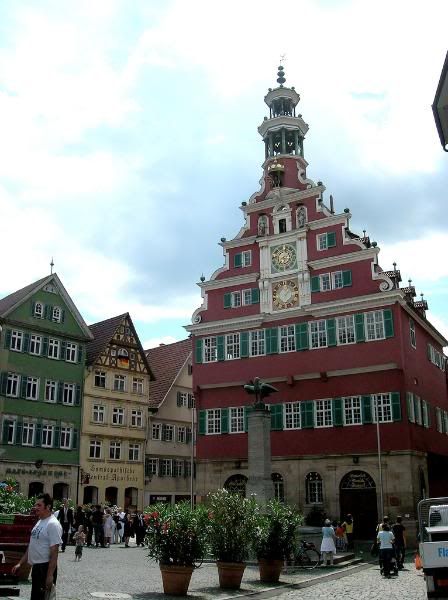
On Gouda town hall, with a glockenspiel re-enacting the town charter
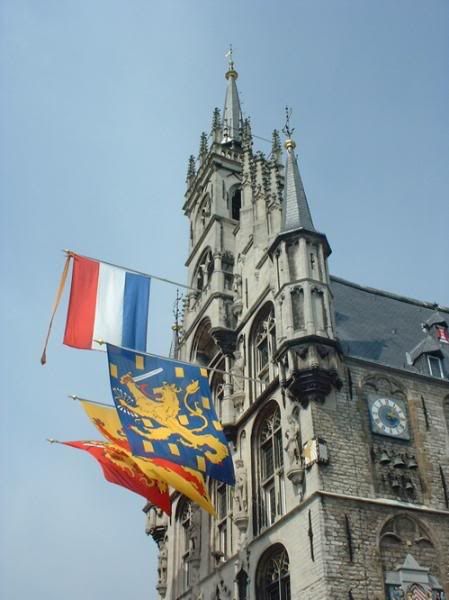
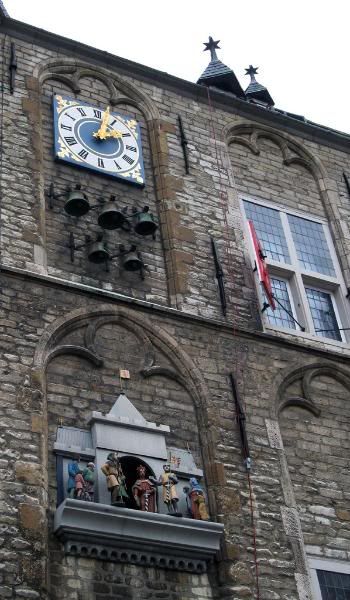
In Moscow, with fairytale characters.
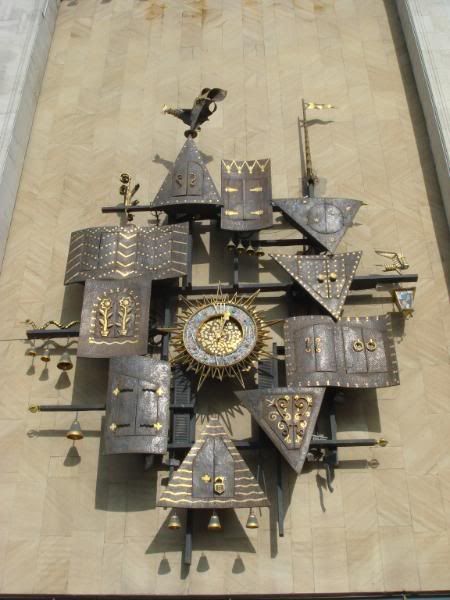
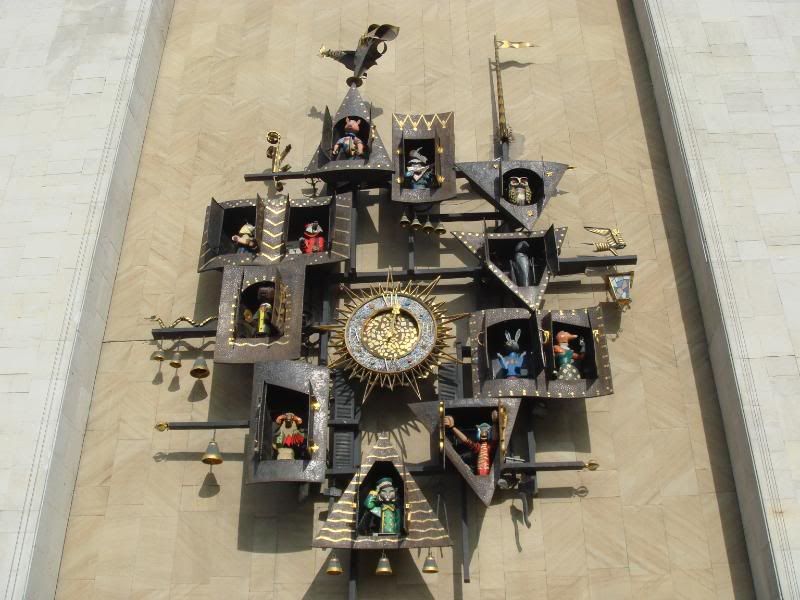
In Münster
In Poznan, with mechanical goats
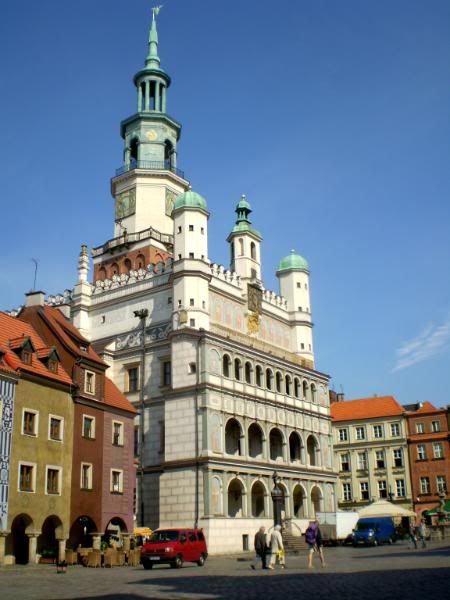

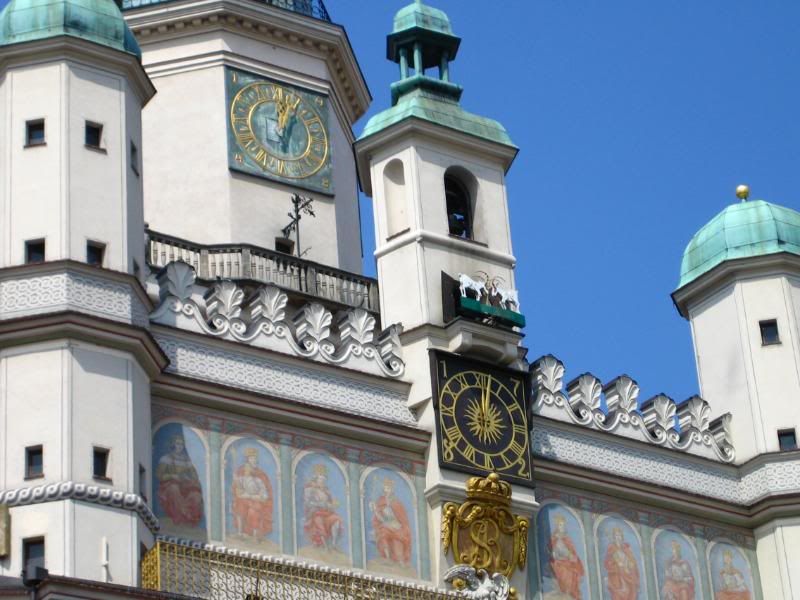
On Tübingen town hall

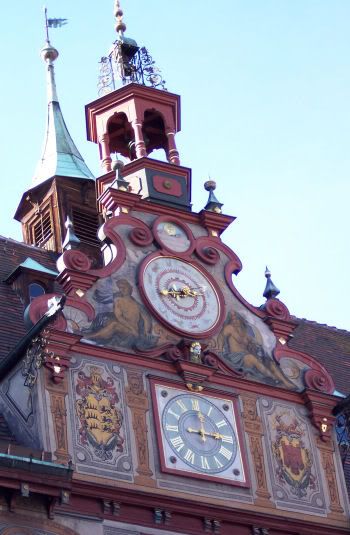
In Zug

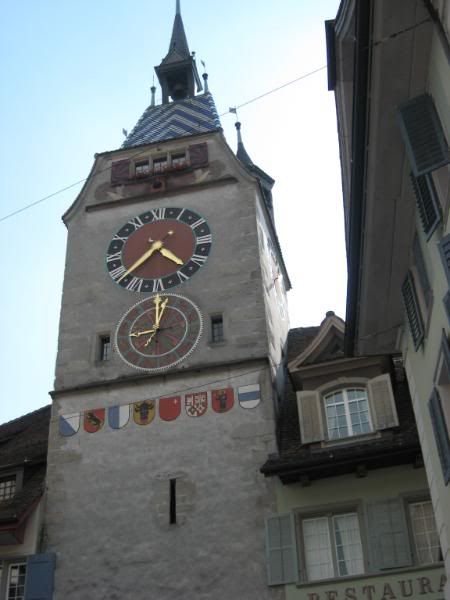
On the former Peacock Jewelry Store
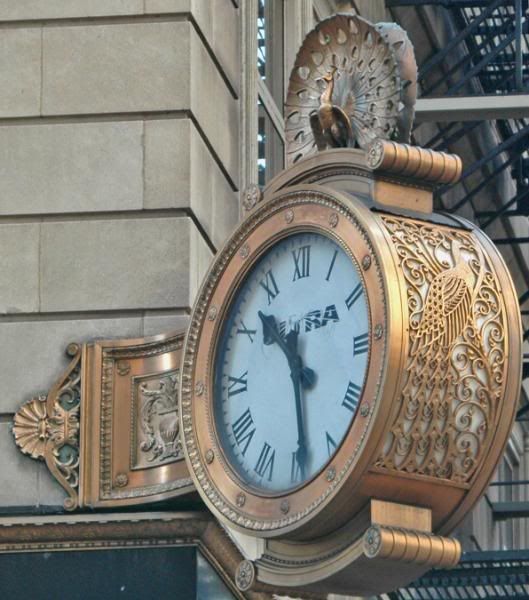
On the former Marshall Field's.

On the Jewellers' Building.
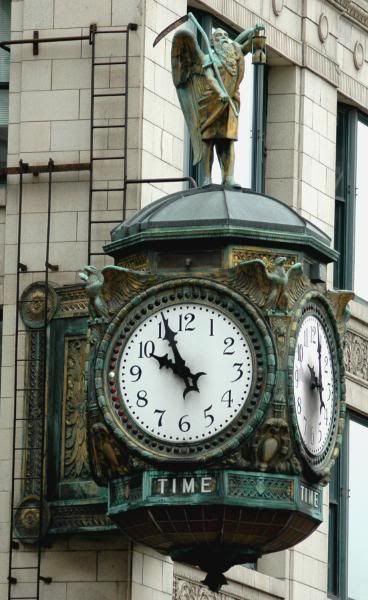
On a building next to the Oriental Theater, currently occupied by Argo Tea.
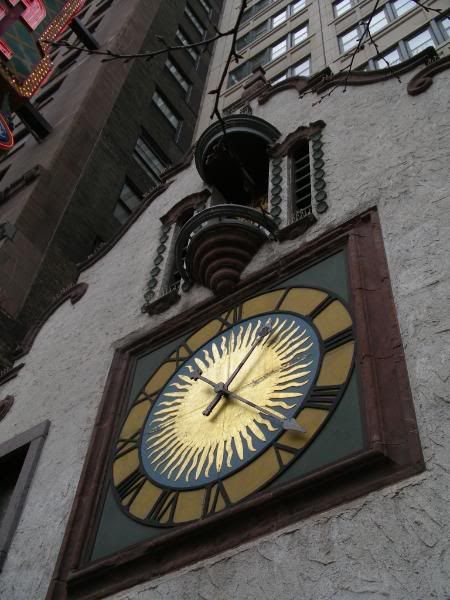
On Hampton Court Palace.
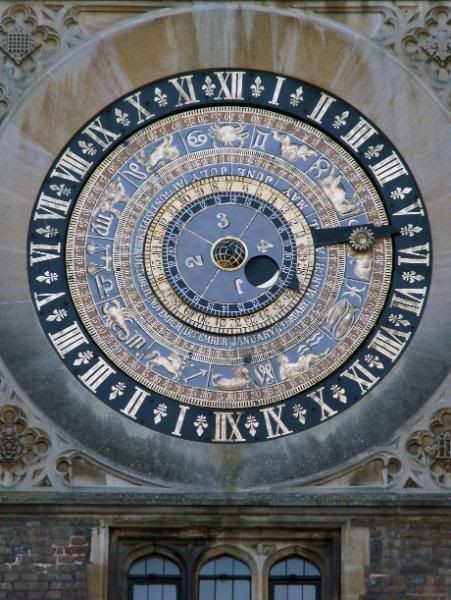

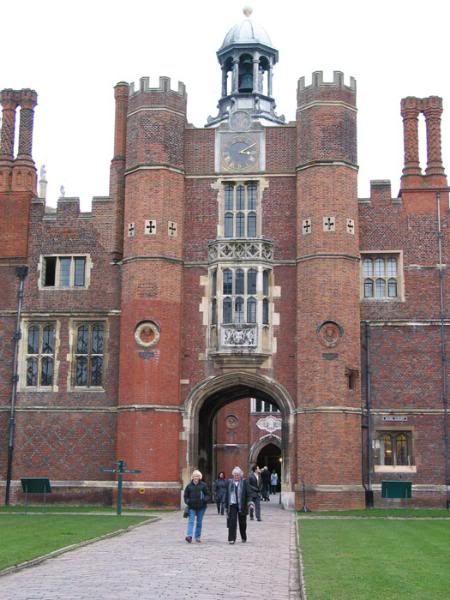
In Paris
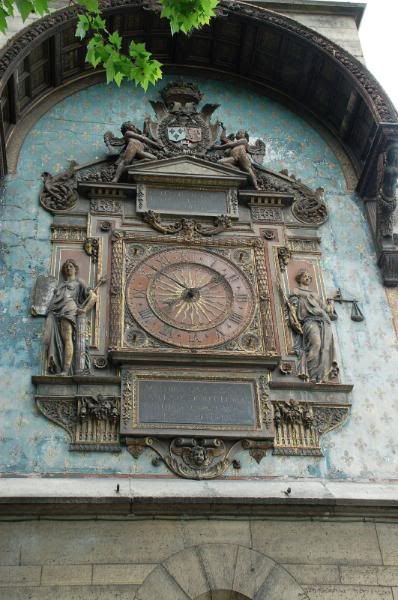
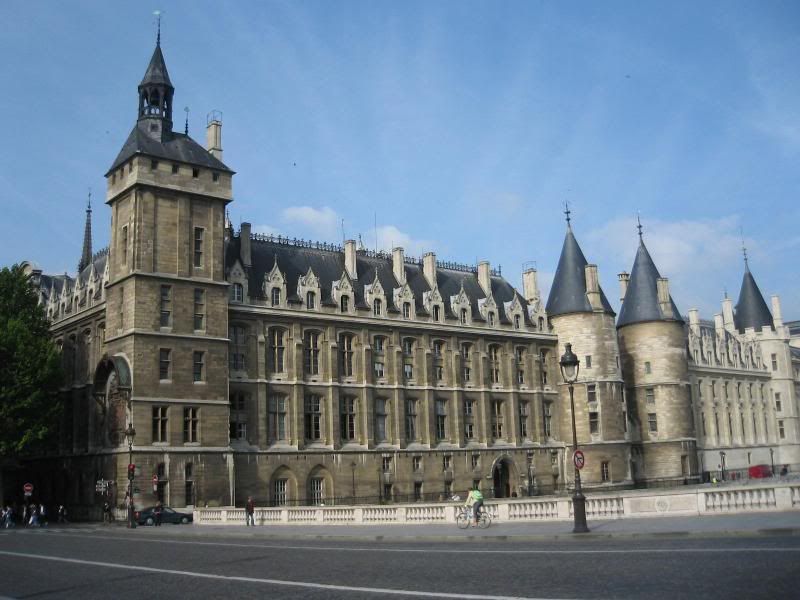
In Aix en Provence.
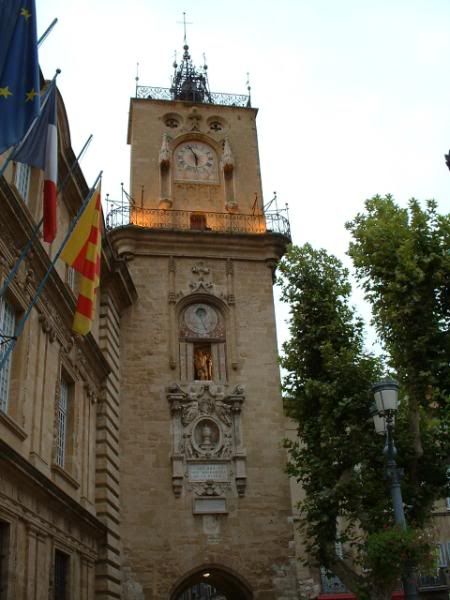
Art Nouveau Clock in Amiens





On Eastgate, Chester, commemorating the Victorian diamond jubilee


On Esslingen town hall



On Gouda town hall, with a glockenspiel re-enacting the town charter


In Moscow, with fairytale characters.


In Münster
In Poznan, with mechanical goats



On Tübingen town hall


In Zug


On the former Peacock Jewelry Store

On the former Marshall Field's.

On the Jewellers' Building.

On a building next to the Oriental Theater, currently occupied by Argo Tea.

On Hampton Court Palace.



In Paris


In Aix en Provence.

Art Nouveau Clock in Amiens


# 5
In Auxerre
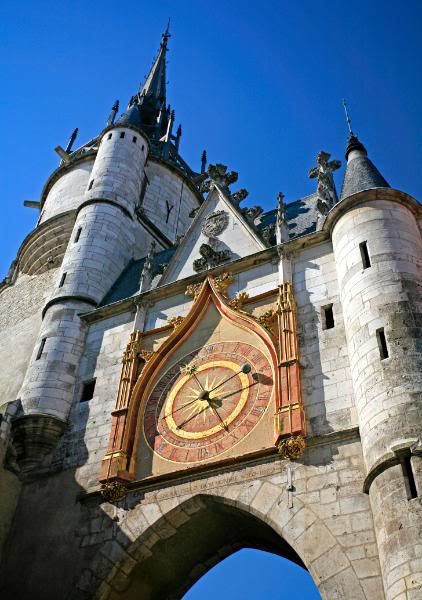
In Baden
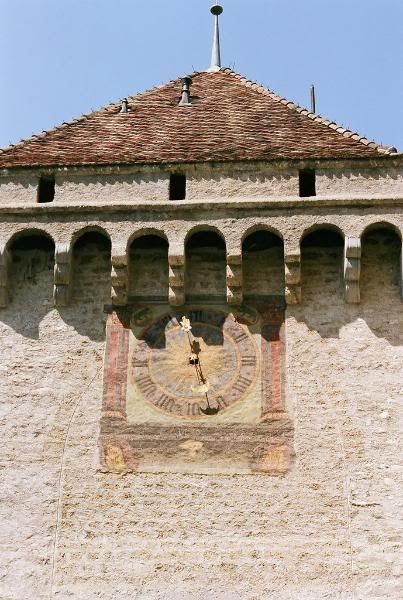
Matthew the Miller Clock on St. Mary Church in Exeter.
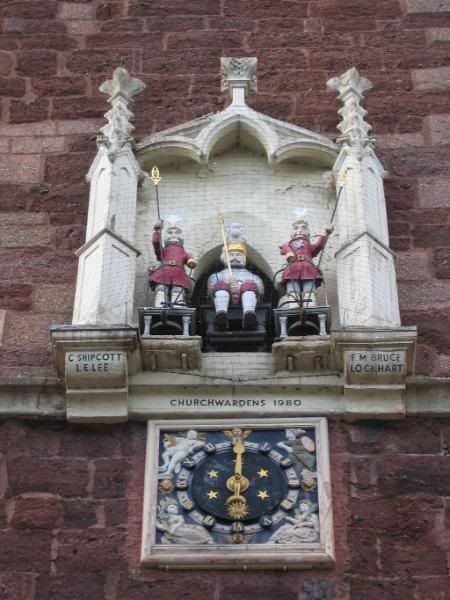
In Wimborne Minster

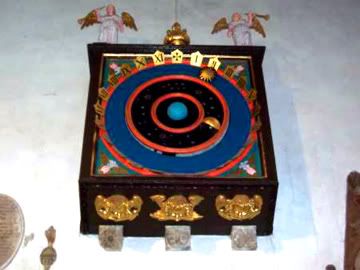
In Münster Bad Doberan.
In Wroclaw.
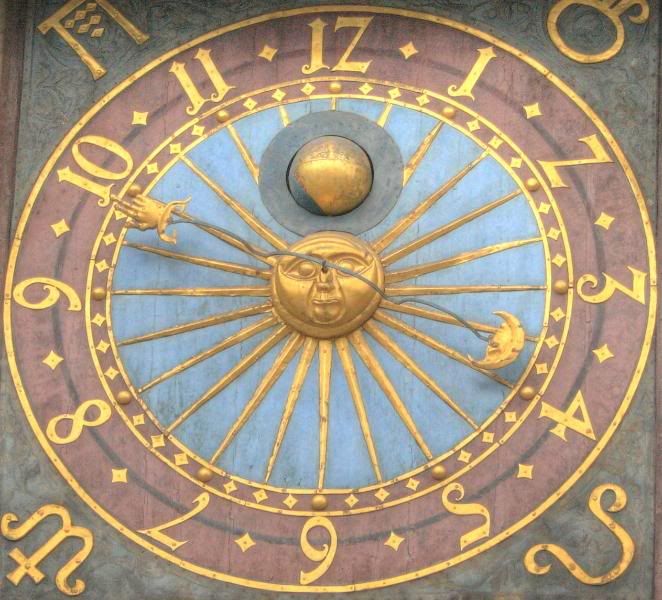
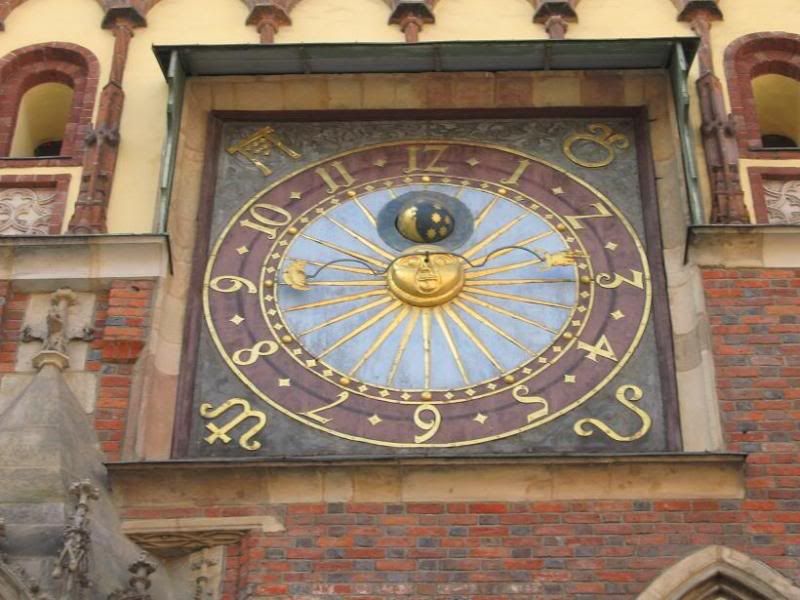
The Lichfield Clock is about eight feet tall and dates back to the mid-18th century. It plays one of five programmed melodies every morning and evening, and tolls the hours. Small figures of Christ, Mary Magdalen, and Simon of Cyrene revolve on the minute.
Its original owner was one Richard Green of Lichfield, who displayed it in his Museum of Curiosities. For years it was displayed in the Art Gallery above the public library in Bath, and now is in the Victoria Art Gallery.
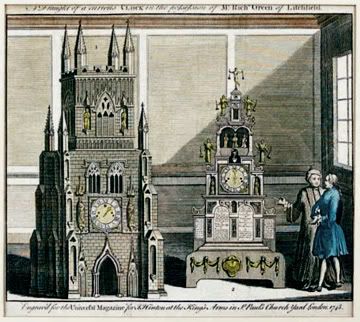
On Bracken House, former publishing house of the Financial Times. Supposedly the face of the sun in the center is Winston Churchill's.
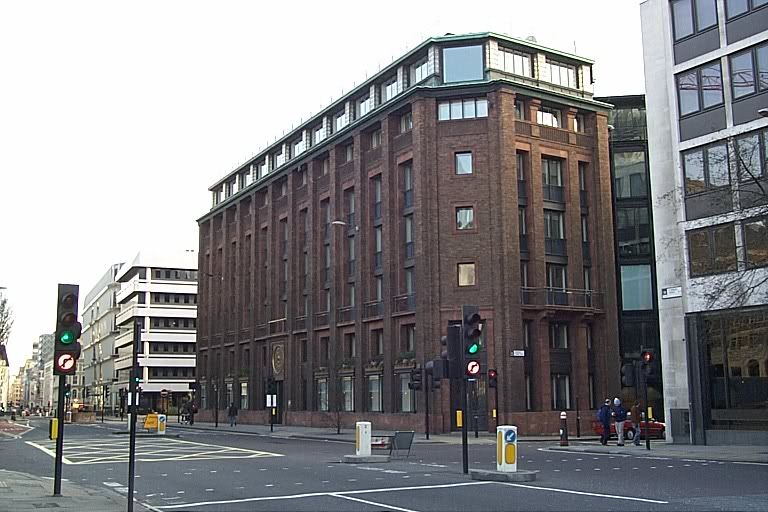
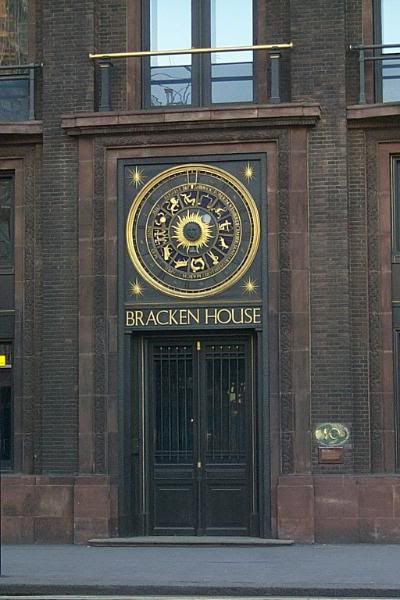
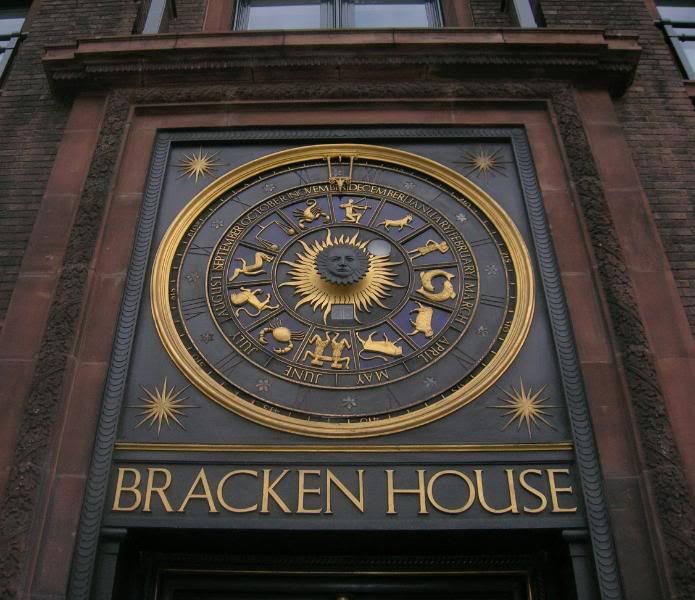
On the Fortnum & Mason Department Store.
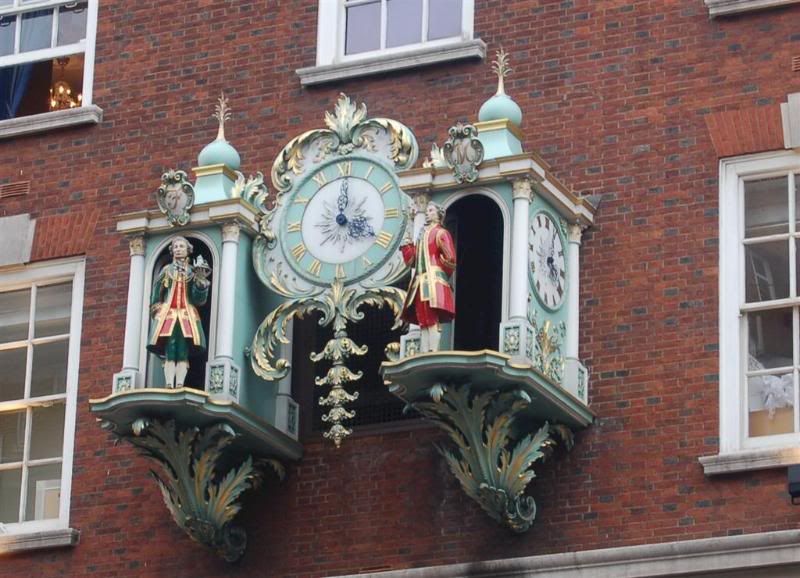
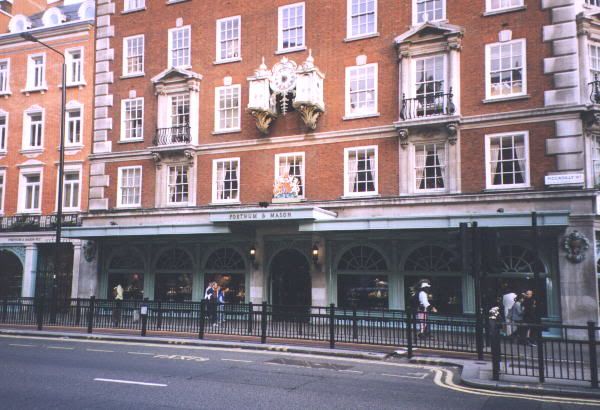
On the Sir John Bennett Jewelry Shop, now a candy store. The belljacks are Gog and Magog.
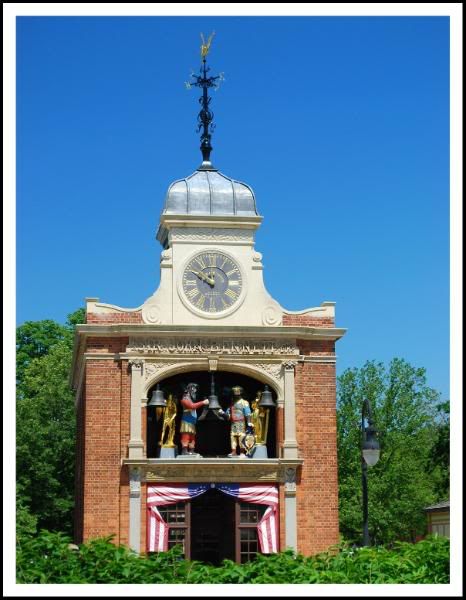
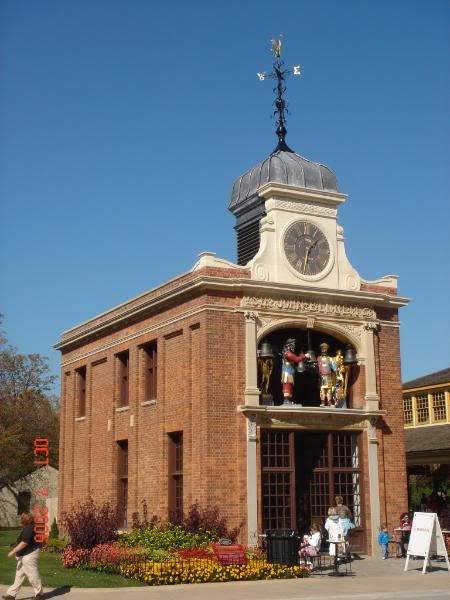
On the Royal Courts of Justice.
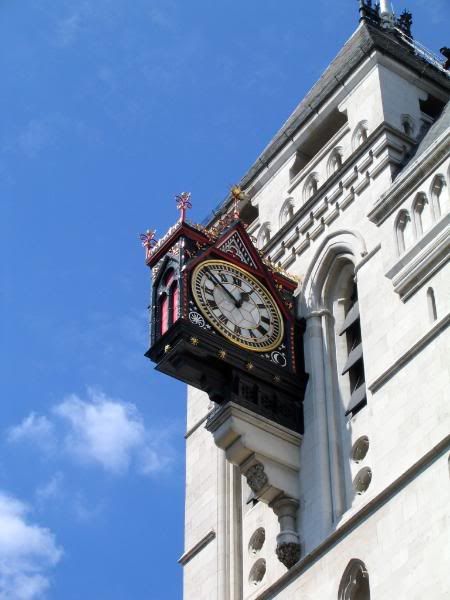
Art Nouveau clock on the Selfridges Department Store.
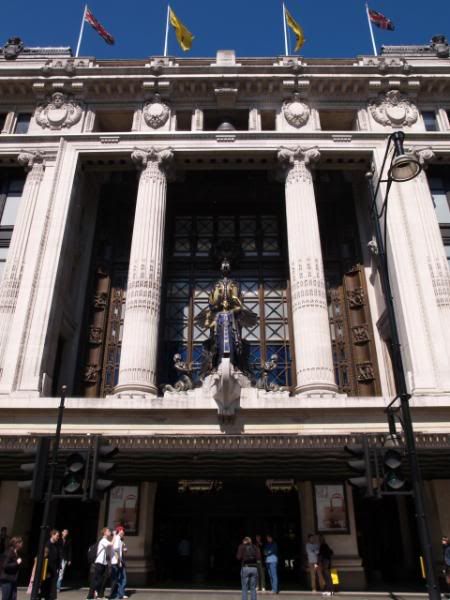
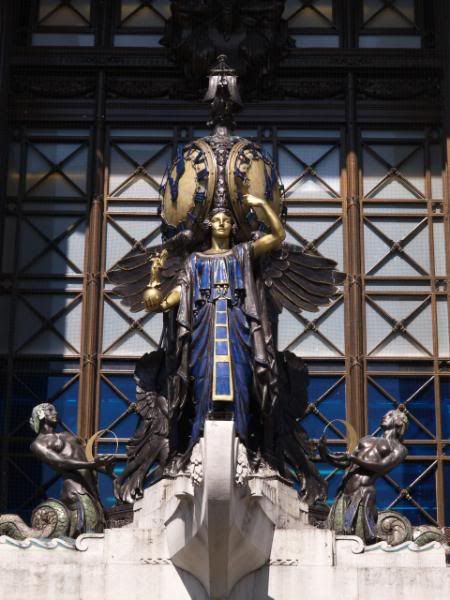
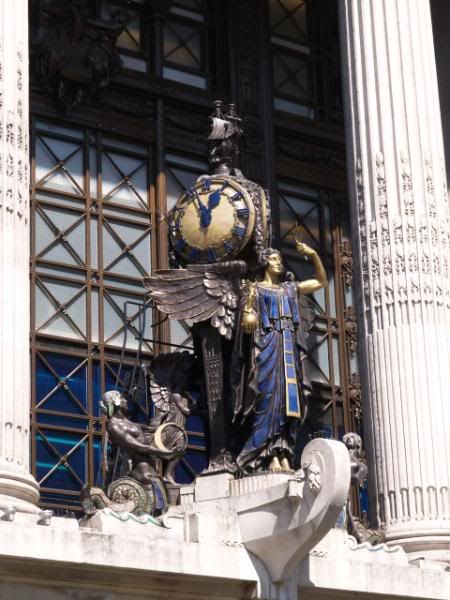
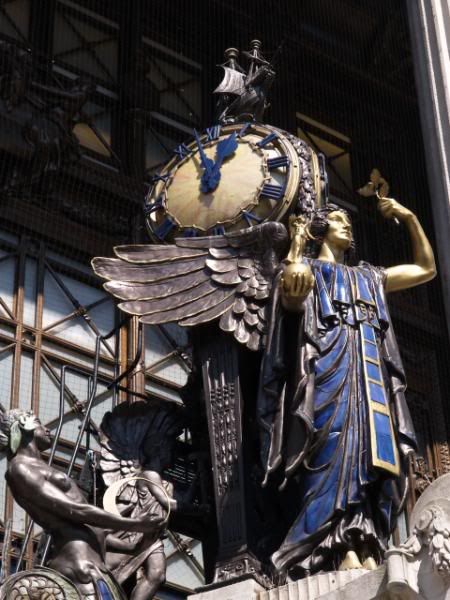
Clock, glockenspiel, and mechanical theater on the Swiss Embassy.
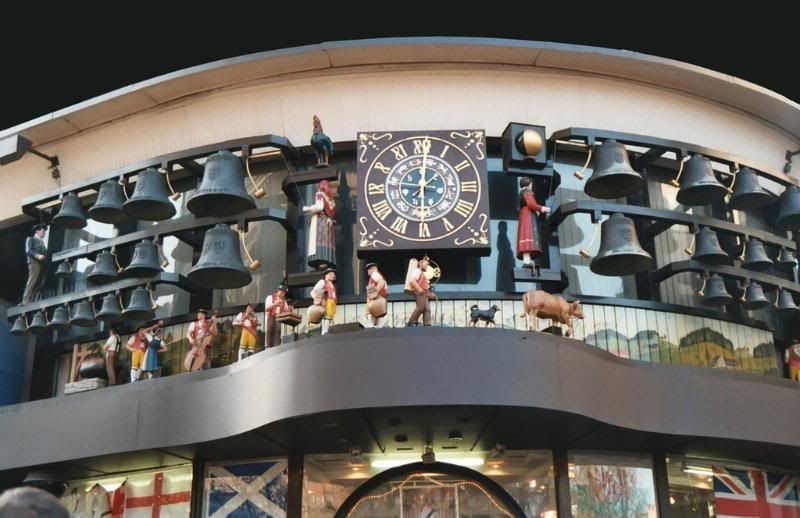
This remarkable timepiece, possibly the most complicated of its kind in the world, was designed and made by Rasmus Sørnes (1893 - 1967) in Moss, Norway. The clock has been shown for some time at the Time Museum in Rockford, and at the Chicago Museum of Science and Industry, but is now sold by Sotheby to an unknown owner. Rasmus Sørnes clocks will probably be the last ones ever designed and made by hand by one single person after his own design and calculations, as a true craftsmanship and as an item of art. His clocks were made by him alone, in his shop, with his homemade tools, according to his own ideas and also supported by his own observations of the firmament.
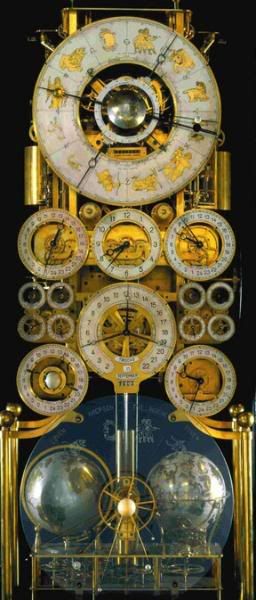
In Anacapri

In Bristol
In Clusone
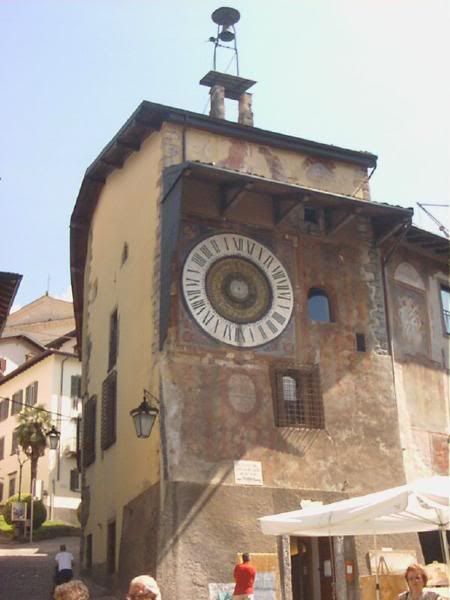
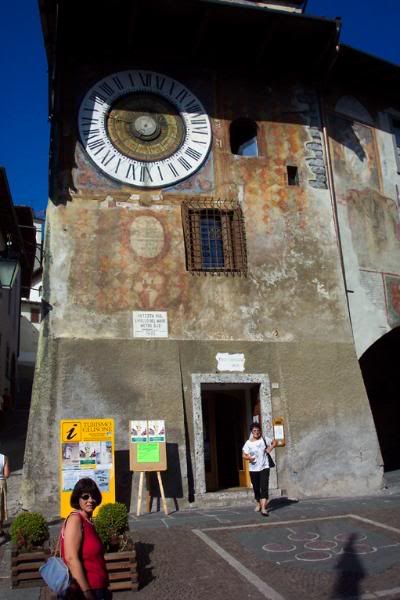
In Cremona
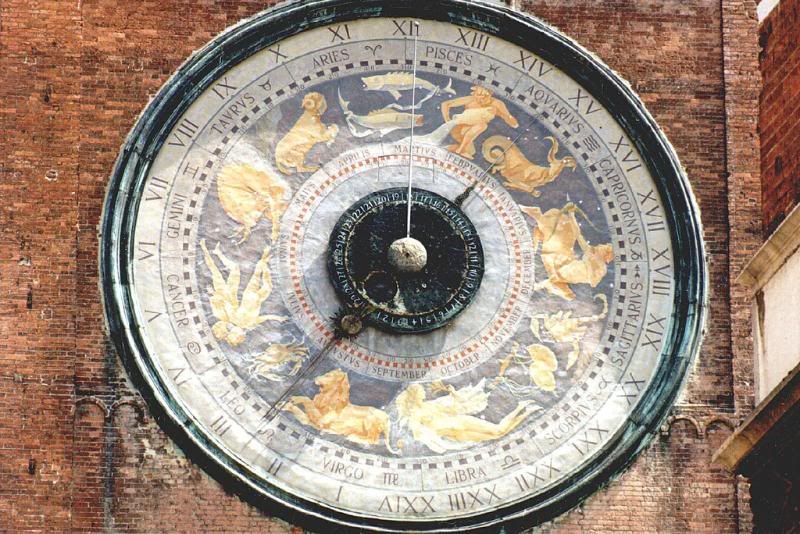
In Mantova

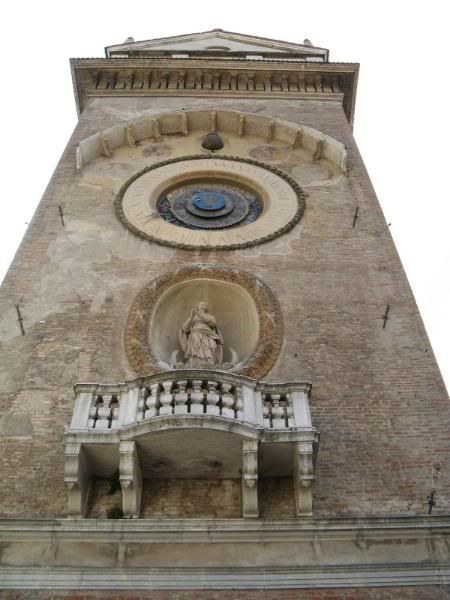
In Mellingen
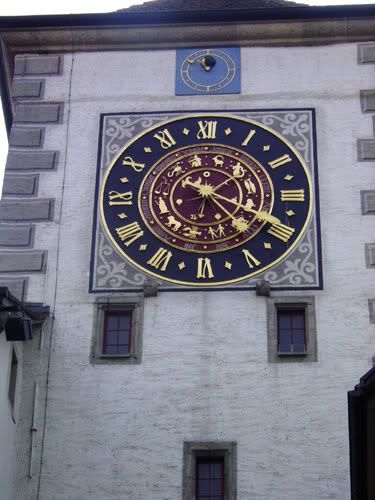
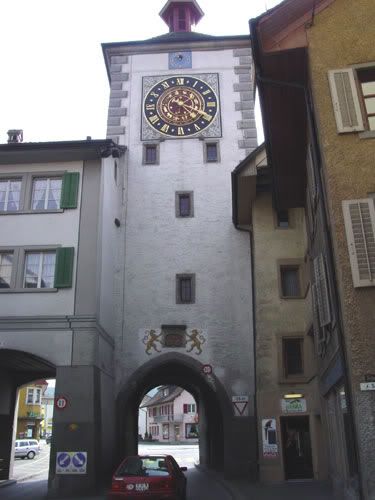
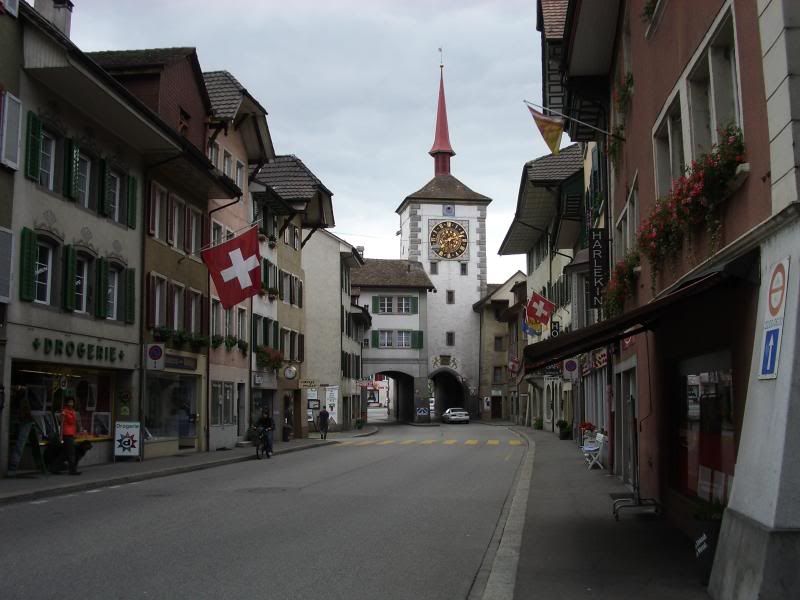

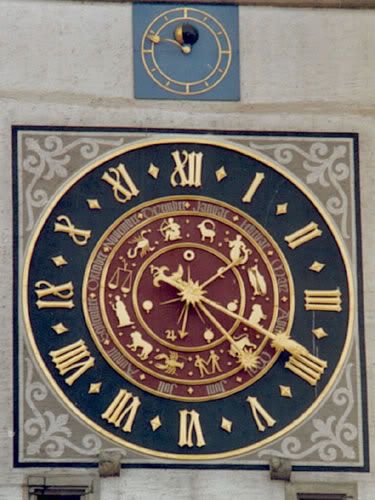
In Ochsenfurt
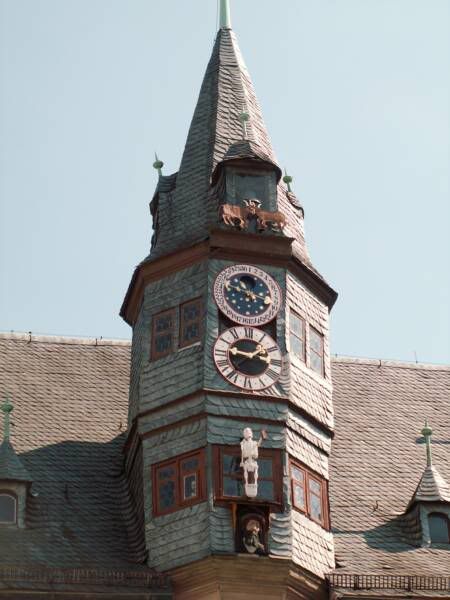
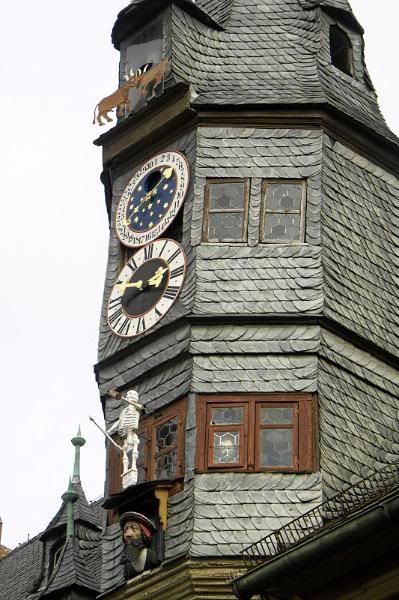

In Baden

Matthew the Miller Clock on St. Mary Church in Exeter.

In Wimborne Minster


In Münster Bad Doberan.
In Wroclaw.


The Lichfield Clock is about eight feet tall and dates back to the mid-18th century. It plays one of five programmed melodies every morning and evening, and tolls the hours. Small figures of Christ, Mary Magdalen, and Simon of Cyrene revolve on the minute.
Its original owner was one Richard Green of Lichfield, who displayed it in his Museum of Curiosities. For years it was displayed in the Art Gallery above the public library in Bath, and now is in the Victoria Art Gallery.

On Bracken House, former publishing house of the Financial Times. Supposedly the face of the sun in the center is Winston Churchill's.



On the Fortnum & Mason Department Store.


On the Sir John Bennett Jewelry Shop, now a candy store. The belljacks are Gog and Magog.


On the Royal Courts of Justice.

Art Nouveau clock on the Selfridges Department Store.




Clock, glockenspiel, and mechanical theater on the Swiss Embassy.

This remarkable timepiece, possibly the most complicated of its kind in the world, was designed and made by Rasmus Sørnes (1893 - 1967) in Moss, Norway. The clock has been shown for some time at the Time Museum in Rockford, and at the Chicago Museum of Science and Industry, but is now sold by Sotheby to an unknown owner. Rasmus Sørnes clocks will probably be the last ones ever designed and made by hand by one single person after his own design and calculations, as a true craftsmanship and as an item of art. His clocks were made by him alone, in his shop, with his homemade tools, according to his own ideas and also supported by his own observations of the firmament.

In Anacapri

In Bristol
In Clusone


In Cremona

In Mantova


In Mellingen





In Ochsenfurt


# 6
In Oslo

In Padua
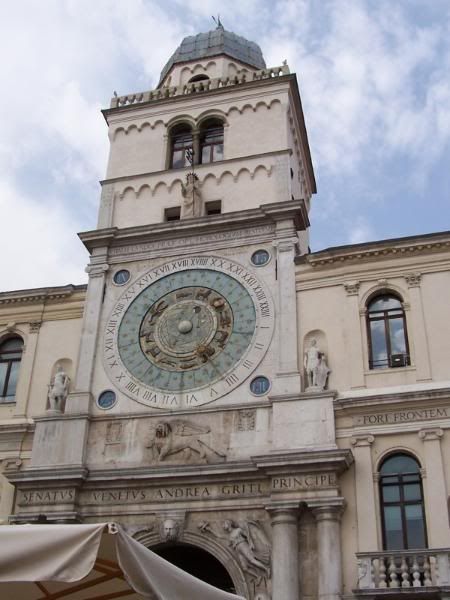
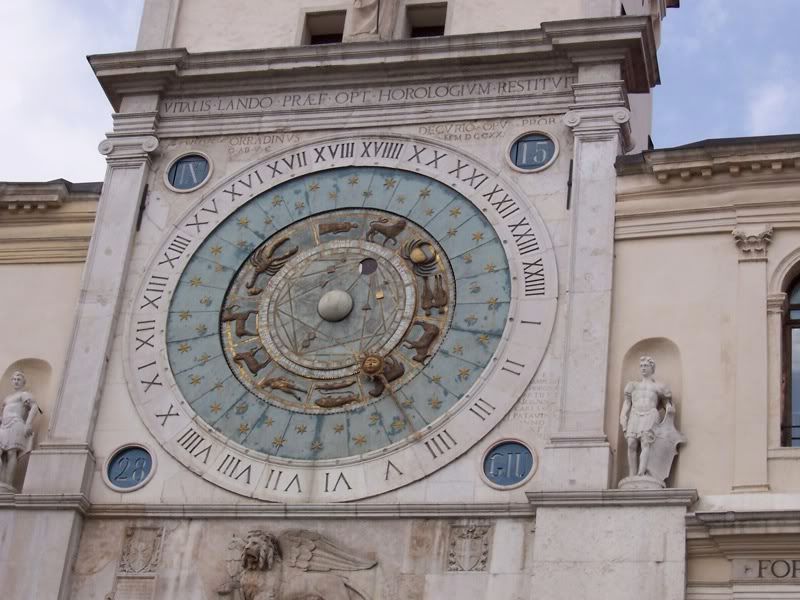
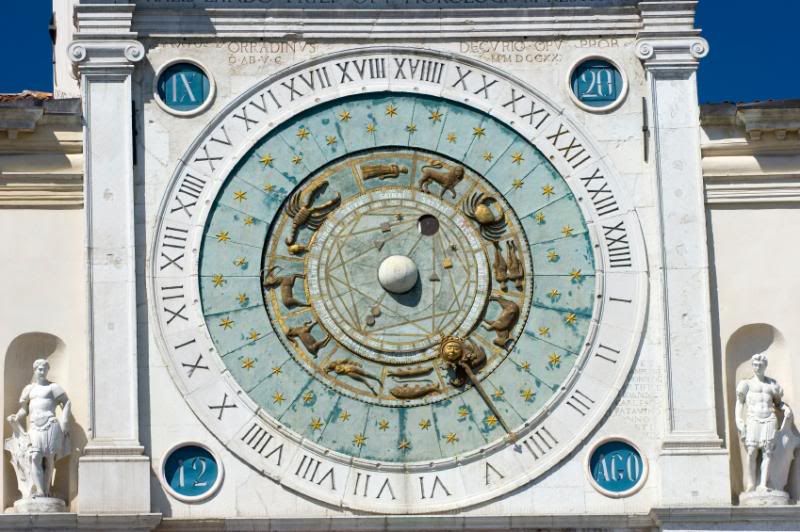
In Schaffhausen

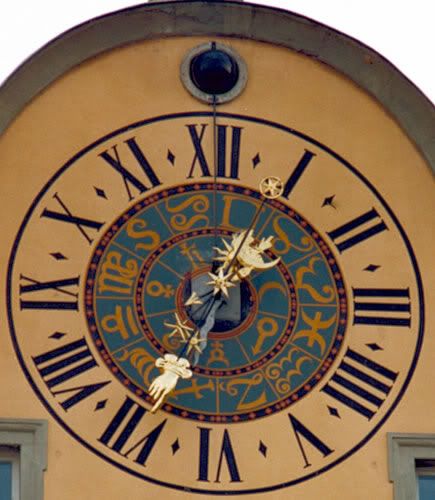
In Split
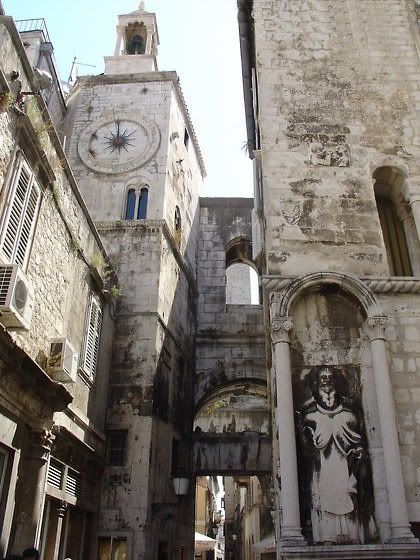
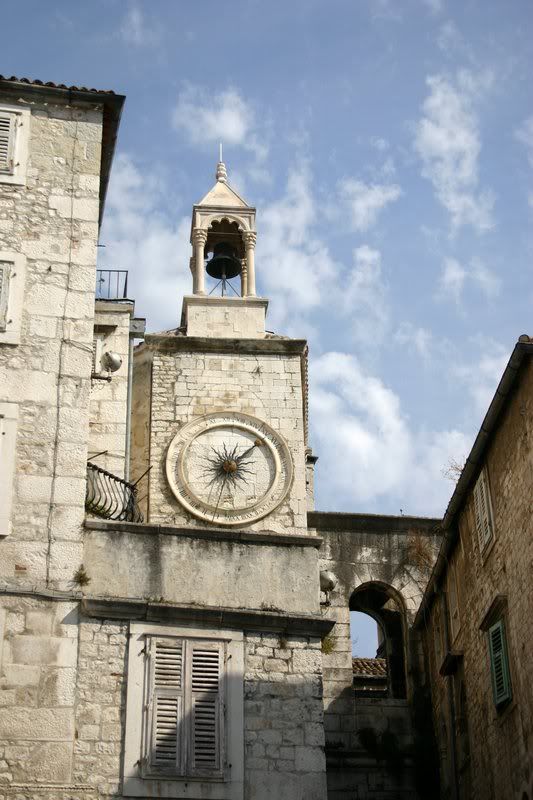

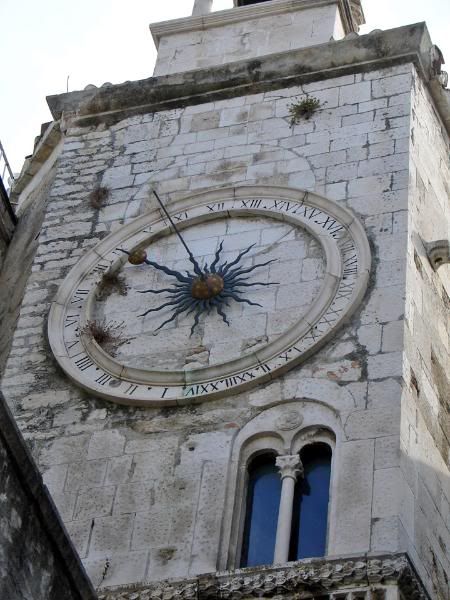
In Winterthur
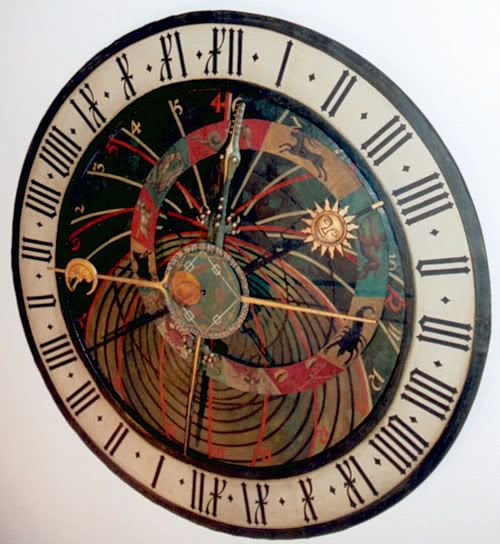
In Stendal MarienKirche

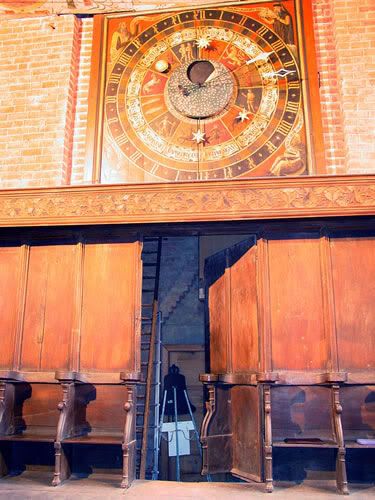
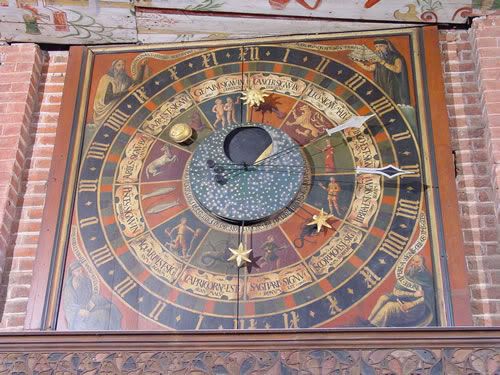
In Bourges Cathedral
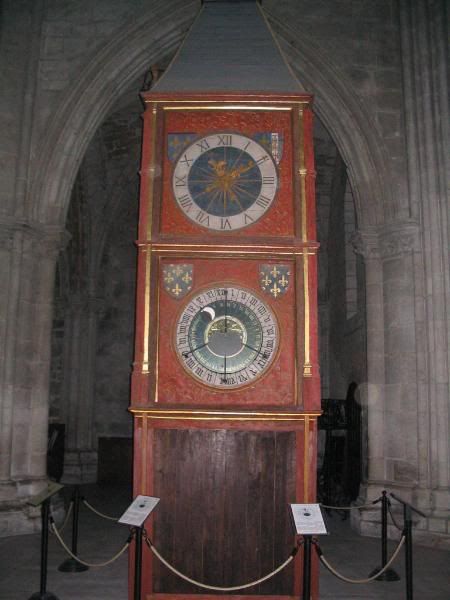
In the Church of Trinity Abbey in Fécamp
On Chartres Cathedral

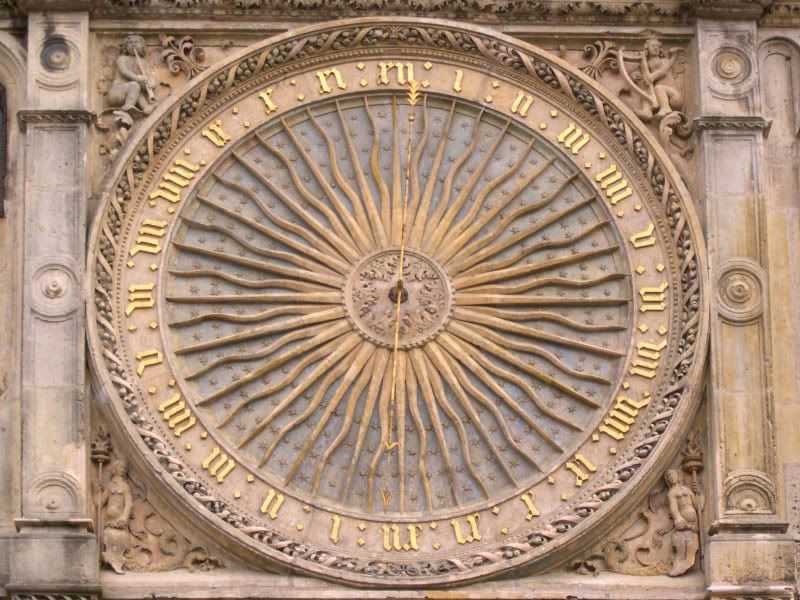
On Wells Cathedral

On Strasbourg Cathedral
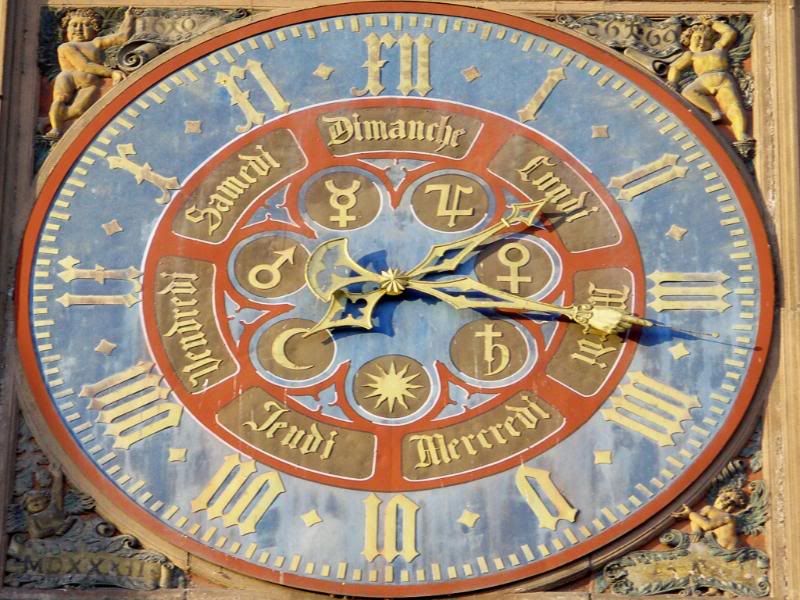
The ENGLE CLOCK
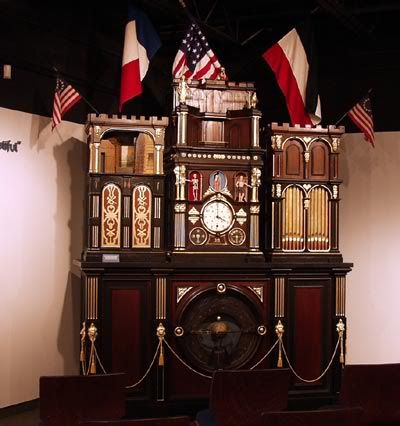

Clocks on church ceilings
St. Bavo Church in Haarlem

St. Wolfgang Church in the town of the same name
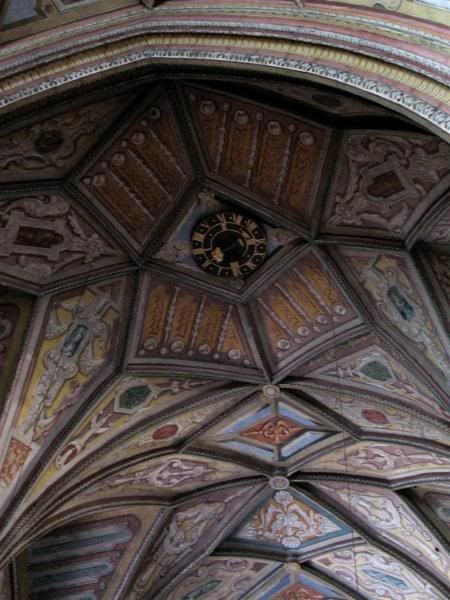
Katarina Lutheran Church in Stockholm


In Padua



In Schaffhausen


In Split




In Winterthur

In Stendal MarienKirche



In Bourges Cathedral

In the Church of Trinity Abbey in Fécamp
On Chartres Cathedral


On Wells Cathedral

On Strasbourg Cathedral

The ENGLE CLOCK


Clocks on church ceilings
St. Bavo Church in Haarlem

St. Wolfgang Church in the town of the same name

Katarina Lutheran Church in Stockholm

# 7
In the cloister of Bebenhausen Monastery
In Cologne.

Delacorte Clock in New York City ~ Central Park. The animals march in circles as nursery rhyme tunes play.
In Nevers Cathedral.
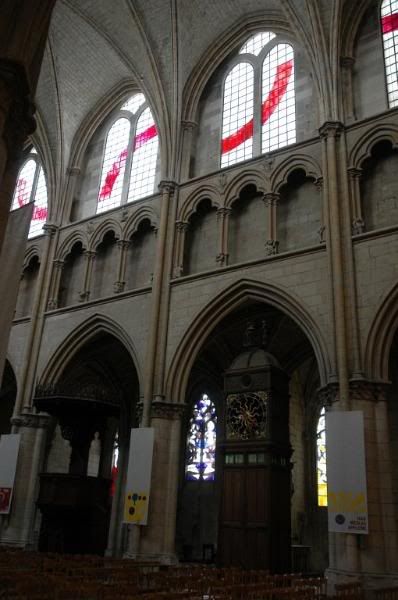
In Sion
In Burg Burghausen
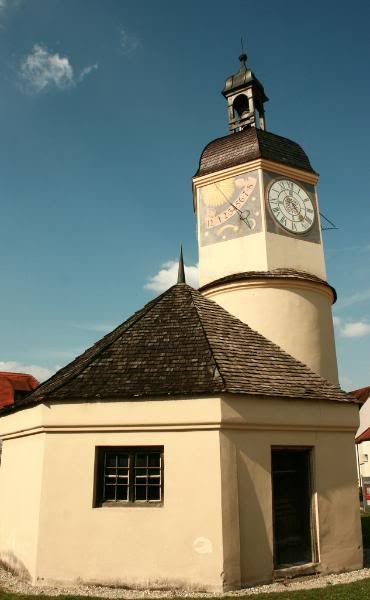
In Munich Frauenkirche
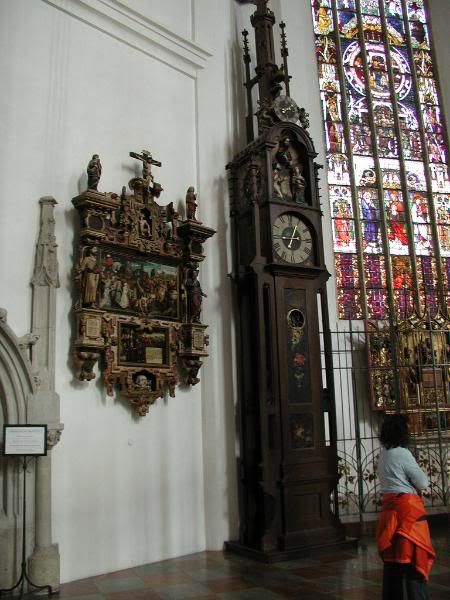
In Cologne.

Delacorte Clock in New York City ~ Central Park. The animals march in circles as nursery rhyme tunes play.
In Nevers Cathedral.

In Sion
In Burg Burghausen

In Munich Frauenkirche






